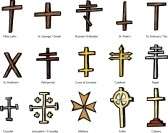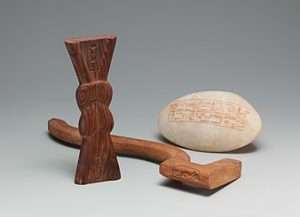
Banksy was here?
One other quote that was made was that if Mr Khans grave site was disturbed then it would be a ‘sign’ for the ‘end’ of the world. Remember symbolic only. The Greek equivalent = ‘Apocalypse’. Same thing as the book of revelations. The ‘unveiling’ of something. The zodiac has different con- stellations ‘changing’ every 2160 years within that ‘great’ cycle and its relevance in mythology. In relation to a ‘new era’. [See 'Hamlets Mill' for verification]. Common parlance... "Out with the old. In with the new". Do you want to begin that ‘new era’? i.e., to satisfy that new curiosity. Then investigate and achieve what the character 'Horus' of Egyptian fame was 'created' to represent. Indicative of each and every one of us. Indicative of the start point of an understanding. Then attempt to find that location.
''It is often believed that times of breakdown are needed for times of breakthrough to emerge.'' [Epilogue to the book 'The Quest of Rose: The Cosmic Keys of our Future Becoming' / J. Houston + A. Smitsman].
''Wounded'' to enlarge.
A practical example: ''Sometimes you have to lose to win.'' Roy Keane {player/manager}.
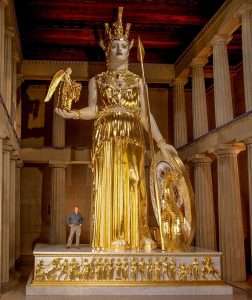
Chryselephantine statues were built around a wooden frame with thin carved slabs of ivory attached, representing the flesh, and sheets of gold leaf representing the garments, armour, hair, and other details. In some cases, glass paste, glass, and precious and semi-precious stones were used for detail such as eyes, jewellery, and weaponry.
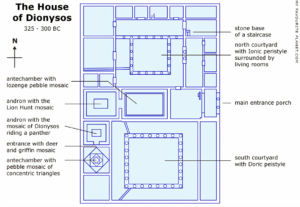 Side note: "According to Thukydides, the temple of Dionysos Limnaios was situated to the south of the Akropolis and was one of the cities oldest sanctuaries....''in the swamps'' the wine was mixed with water and drank to him for the first time in the new wine year....Prior to this, in their homes, the Athenians had drawn the still sweet wine - from large clay vessels - and then brought it to the scene of the festival....It was mixed with spring water. The place must have been a geological formation characteristic of Greece - the best known example of which is the swamp of Lerna: water pours from under the rocks {'Peter'?}, yet despite its purity it forms a ''swamp''. Dionysos entered into the 'underworld' and returned from it near Lerna....That is why in Aristophanes the song of the 'frogs' of this swamp accompanied Dionysos on his journey to the underworld.....In time the springs dried up. According to Strabo - at the time of Christs birth {hint,hint} - the sanctuary stood on 'dry land'....The sanctuary in the 'swamps' was regarded in Athens not only as the oldest but also the most sacred temple of Dionysos.'' [Pages 291-3 'Dionysos' / C. Kerenyi].
Side note: "According to Thukydides, the temple of Dionysos Limnaios was situated to the south of the Akropolis and was one of the cities oldest sanctuaries....''in the swamps'' the wine was mixed with water and drank to him for the first time in the new wine year....Prior to this, in their homes, the Athenians had drawn the still sweet wine - from large clay vessels - and then brought it to the scene of the festival....It was mixed with spring water. The place must have been a geological formation characteristic of Greece - the best known example of which is the swamp of Lerna: water pours from under the rocks {'Peter'?}, yet despite its purity it forms a ''swamp''. Dionysos entered into the 'underworld' and returned from it near Lerna....That is why in Aristophanes the song of the 'frogs' of this swamp accompanied Dionysos on his journey to the underworld.....In time the springs dried up. According to Strabo - at the time of Christs birth {hint,hint} - the sanctuary stood on 'dry land'....The sanctuary in the 'swamps' was regarded in Athens not only as the oldest but also the most sacred temple of Dionysos.'' [Pages 291-3 'Dionysos' / C. Kerenyi].
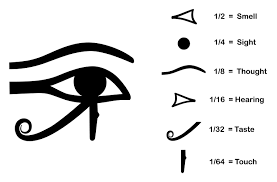
The sweet spot?
From a different perspective: ''What do we get out of our religious beliefs? The answer is enlightenment or illumination {i.e., represented with the suns rays?} AND peace, what the ancient Egyptians called hotep and is represented by the hieroglyph for communion - the bread and beer of the Egyptians. THIS IS THE PEACE that accompanies 'illumination'. In Buddhist meditation, the place of peace and nothingness {'void'?} may be called the ''sweet spot.'' [Page 188 'Imagining the World Into Existence' / N. Ellis].
Feast of Fools?
Poseidon feasting in Ethiopia?
From a different perspective: ''The seventh arcanum taught how inner equilibrium is attained {or health}; the teaching of the eighth arcanum is how this equilibrium, once reached, is maintained {'mechaninism' of Micro and Macrocosmic balance}; and the ninth arcanum shows the method or WAY which opens up to he who knows how to attain and maintain equilibrium - the 'way of peace' or the 'middle way' - that of balanced spiritual development.'' [Page 173 'Meditations on the Tarot'].
Libra?

Result of a ''movement''?
Continued: From a different perspective: "The statements {within the Aztec codex} focus attention on the belief that the world has already passed through 'four' epochs or 'Suns'. The First and most remote of these is represented by Ocelotonatiuh, the jaguar god: 'During that 'sun' lived the 'giants' that had been created by the gods but were finally attacked and 'devoured' by jaguars....The symbol of the Fifth Sun, our current epoch, is the face of Tonatiuh, the sun god himself. His tongue, fittingly depicted as an obsidian knife, juts out hungrily, signifying his need for 'nourishment' of human blood and hearts. His features are wrinkled to indicate his advanced age and he appears within the symbol Ollin which signifies Movement. Why is the Fifth Sun known as ''The Sun of Movement''? Because the elders say: in it there will be a movement of the earth and from this we shall all perish." [Page 99 'Fingerprints of the Gods' / G. Hancock].
Try ''Static/Dynamic'' / ''obsidian'' - ALL as a means....?
Question. ''Wrinkled'' = Labyrinth link? Recall the Gilgamesh epic.
And/or: Sky-Religion? i.e., Hoeing the Earth. Therefore ''rainmaking''? Aquarius link?
Try Part 1.

What do dragons especially ''winged'' ones represent?
 Refresher: "An aim of meditation is to withdraw the Ego from the lower levels, where desire operates, and float free of the hypnotizing power of the material realm. In this way, the Ego can float as though on the surface of an entirely still lake. In this calm surface, the Ego may reflect the heavens above, and thus receive perfectly the effulgency of that godhead of which it was part. In the Way of the Fool, this form of meditation is a prelude to looking into the secrets of Nature..." ['The Zelator'].
Refresher: "An aim of meditation is to withdraw the Ego from the lower levels, where desire operates, and float free of the hypnotizing power of the material realm. In this way, the Ego can float as though on the surface of an entirely still lake. In this calm surface, the Ego may reflect the heavens above, and thus receive perfectly the effulgency of that godhead of which it was part. In the Way of the Fool, this form of meditation is a prelude to looking into the secrets of Nature..." ['The Zelator'].
And/or: "If we had more time we'd visit the Islands of the Sun and Moon...but we have been to them before, and they are not our target this trip. It's Tiahuanco up on the Altiplano at 120000 feet, near the southeastern shore of the giant lake, that we are keen to get back to." ['The Magicians of the Gods'].
Either way what you have within these pages is equivalent to a ‘crash course’ in the above subject. If you can get your head around the enclosed...you may be surprised; once you take up that interest; how quickly you begin to understand the overall subject and its connections. In order to evaluate it...one way or the other. As one has to do in any subject.

Question. What's the remedy?
Suitable books to begin that interest...enclosed within. Then you can ask those bigger questions. Especially that 64 billion dollar one. The same one that was implied at the beginning. Is there any ‘real’ substance to it, i.e., does life; in all its forms, really continue, and if so, why. What are those possibilities? Or is it just one big roller coaster ride. What do you think?
Thank yourself for the time and effort.
"Are there any qualifications required for entering upon a Path? As we have pointed out, the 'Way of the Path' is not the same as the way of life, and qualifications for entry to a School are not at all like qualifications in life. Those who are in charge of the esoteric schools know all to well that the secret of all mankind lies in the Will. They recognise that if a person wills to set out on a Path, then no School can possibly obstruct or deflect that person." ['The Zelator'].
And/or: "Learning something new will help {any brain} age well...If you want to keep your brain as young as it can be, then learning something new is one of the best things you can do...It should be new and challenging, that in itself will help the brains capacity" ['How to Stay Young' /BBC1/Series 2. Episode 3].
 "What is it about reading books that boosts our brain power whereas reading newspapers doesn't? Researchers talk about ''deep reading'' when the brain has to think critically that allows connections to be made. Over time these neural networks can promote quicker thinking and may provide a greater defence against cognitive decay...Secondly, reading books, especially fiction, has been shown to increase empathy and emotional intelligence...Cognitive reserve helps your brain cells find new mental pathways around areas damaged by stroke, dementia and other forms of decay. This could explain why, after death, many seemingly healthy elders turn out to harbour advanced signs of Alzheimer's disease in their brains - despite showing few signs in life. Researchers suspect its their cognitive reserve, that may allow some seniors to compensate for hidden brain damage. So how does one build up a cognitive reserve..." [Readers Digest. April 2018].
"What is it about reading books that boosts our brain power whereas reading newspapers doesn't? Researchers talk about ''deep reading'' when the brain has to think critically that allows connections to be made. Over time these neural networks can promote quicker thinking and may provide a greater defence against cognitive decay...Secondly, reading books, especially fiction, has been shown to increase empathy and emotional intelligence...Cognitive reserve helps your brain cells find new mental pathways around areas damaged by stroke, dementia and other forms of decay. This could explain why, after death, many seemingly healthy elders turn out to harbour advanced signs of Alzheimer's disease in their brains - despite showing few signs in life. Researchers suspect its their cognitive reserve, that may allow some seniors to compensate for hidden brain damage. So how does one build up a cognitive reserve..." [Readers Digest. April 2018].
Question. Did the ancients know something? Or is it already within us? i.e., ''cognitive'' in relation to that universal 'bit'. Recall Part/Page 1.
Refresher: ''Patience is the mother of Will. If you have no mother, how can you be born?" Gurdjieff.
Question. What symbol {image?} represents it?
'Where there is a Will, there is a way'. Question. The Way of the Will?
 After thought.... If the above authors have a genuine insight on something that could be ‘real ’. Could it be expressed within, say, an equation. Could an hypothesis that A and B, [this world / That one.’ Esoterically’ also known in some cultures as ‘Above and below’, i.e., 'waters' above/below the firmament", [Genesis. ‘Firmament’ by the way is the Hebrew equivalent of that Primordial mound, as well as a link to the word 'horizontal' [i.e.,''horizon''] i.e., 'in-between' sea and rain water. 'See' it?]...be expressed as an Algebraic equation? If so, on what side of the equal sign would ‘B’ be placed if it were indeed ‘Primary’ over ‘A’. Left or right of the equal sign?
After thought.... If the above authors have a genuine insight on something that could be ‘real ’. Could it be expressed within, say, an equation. Could an hypothesis that A and B, [this world / That one.’ Esoterically’ also known in some cultures as ‘Above and below’, i.e., 'waters' above/below the firmament", [Genesis. ‘Firmament’ by the way is the Hebrew equivalent of that Primordial mound, as well as a link to the word 'horizontal' [i.e.,''horizon''] i.e., 'in-between' sea and rain water. 'See' it?]...be expressed as an Algebraic equation? If so, on what side of the equal sign would ‘B’ be placed if it were indeed ‘Primary’ over ‘A’. Left or right of the equal sign?
Could the above lead to an expression, if only in part; hypothetically; to such physics anomalies as to the weakness of gravity? Especially in relation to Edward Tellers contribution to the understanding of the ‘Fine structure constant’ in relation to gravity. Or as to why Deuterium can only be destroyed and not created inside those nuclear planetry explosions? Which is why most believe Deuterium had to be created shortly after ‘bigbang’. In other words...Does gravity leak from the fourth into the fifth OR from the fifth into the fourth? Or does it 'matter' ?
'Heart of the matter'.
Side note: "Although early authors varied in their ascription of the twelve zodiacal constellations to the twelve tribes of Israel - yet they were generally in accord in assigning to Reuben 'unstable as water'..." [notes within 'Aquarius', 'Star Names and Their Meaning'].
A working example: ''Life is actually the manifestation of the spirit in matter...." ['Her-Bak'].
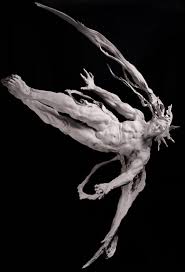
'Photon' by M. L. Snowden.
As in the case with what is termed... ‘imaginary numbers’, [especially the ‘square root of minus one’]. Would they still remain ’imaginary’ especially in relation to ‘Prime’ numbers should ‘B’ exist? Or are they still valid...if only to the observer in ‘A’ ? What about in relation to the obsever in ’B’ ?, [hypothetical only of course]. As is the word ''observer'' and its true deeper meaning [with the above in mind, i.e.,'B' being primary over 'A'] in relation to the 'two slit / photon' experiment. The same could be said for the ''uncertainty'' clause of 'Quantum Mechanics'. If 'B' was a priority over 'A' - does it not make it less so?
Finally. As a ‘teaser’...If you ’are getting your head around it’. Fill in the missing bits... Mirror Particle ‘B’...Together with the ‘life’ part of ?? equals = ?? [Possible General Unified Theory? i.e., where science meets ‘re-ligion’, i.e., Crossover point? Empirical / spiritual]. Or as Mr Fred Alan Wolf says, ''Where science meets spirit.'' [i.e.,"Dark night of the Soul"]? ['Dr. Quantum's little book of big ideas'].
 Don't forget those first impressions.... i.e.,"I do not believe in the possible future of mysticism in the old form. However, i do believe that the natural sciences will out of themselves bring forth a counter pole in their adherents, which connects with the old mystic elements". [Quote by Wolfgang Pauli, prologue, 'Deciphering the Cosmic Number' by A. Miller]. Tail end of something equates to the beginning of something else?
Don't forget those first impressions.... i.e.,"I do not believe in the possible future of mysticism in the old form. However, i do believe that the natural sciences will out of themselves bring forth a counter pole in their adherents, which connects with the old mystic elements". [Quote by Wolfgang Pauli, prologue, 'Deciphering the Cosmic Number' by A. Miller]. Tail end of something equates to the beginning of something else?
Now in the present sense of the word: "Brian Swimme had been using the term 'archetypal cosmology' since 2001, if not before...Others {i.e., J. Hillman / D. Griffin} in the book 'Archetypal Process', had sketched out a ''psychological cosmology''...For the journal itself, i felt the term 'Archai', as the main title, would be striking and evocative, while giving a sense for archetypal astrology's roots in the ancient world." ['Archai: The Journal of Archetypal Cosmology'].
''Archetype'' in relation to subject material REGARDLESS of sub-heading. Enlarged throughout.
Fact or fiction - a possibility or not?
... ''the no man's land between Physics and the Psychology of the Unconscious [is] the most fascinating yet the darkest hunting ground of our times." [Back cover to the book, '137: Jung, Pauli, and the Pursuit of a Scientific Obsession' by Arthur Miller].
'Cosmos and Psyche' / R. Tarnus.
"Sacred science subscribes to a holistic approach that incorporates legends, history, experimental evidence, and traditional science to explore various hypotheses regarding the nature of reality.....The principle underlying Sacred science is that no separation exists between spirit and science. Spiritual principles should undergo scientific inquiry, and spiritual integrity should underlie scientific investigation." [ First page, first paragraph [Preface] to the book ' The Science of the Soul' by R. Siblerud].
"The time will come, when the secret wisdom shall again be the dominating religious and philosophical urge of the world: 'out of the cold ashes of lifeless creeds, shall rise phoenix - like, the ancient mysteries .....The unfolding of mans spiritual nature is as much as an exact science as astronomy, medicine, and jurisprudence". [Manly P. Hall].

Left or right 'hand'. Raised?
"Linkage of Entropy with 'Becoming'.... When you say to yourself, 'Every day i grow better and better', science churlishly replies: 'I see no signs of it. I see you extended as a four dimensional worm in space-time; and, although good-ness is not strictly within my province, i will grant that one end of you is better than the other. But whether you grow better or worse depends on which way up i hold you. There is in your consciousness an idea of growth or "becoming" which, if it is not illusory, implies that you have a label "This side up". I have searched for such a label all through the physical world and can find no trace of it, so i strongly suspect that the label is non-existent in the world of reality'..... That is the reply of science comprised in primary law.....
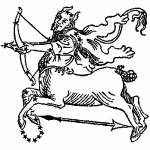
What does the 'arrow' point at?
....Taking account of secondary law, the reply is modified a little, though it is still none too gracious: i have looked again and, in the course of studying a property called entropy, i find that the physical world is marked with an arrow which may possibly be intended to indicate which way up it should be regarded. With that orientation i find that you really do grow better. Or, to speak precisely, your good end is in the part of the world with most entropy, and your bad end in the part with the least. Why this arrangement should be considered more creditable than that of your neighbor who has his good and bad ends the other way round, i cannot imagine". Together with....

'Feminine' aspect? The beginning of something?
"The linkage of entropy-change to 'becoming' presents features unlike every other problem of parallelism of the scientific and familiar worlds. The usual relation is illustrated by the familiar perception of colour and its scientific equivalent electromagnetic wavelength. Here there is no question of resemblance between the underlying physical cause and the mental sensation which arises. All that we can require of the symbolic counterpart of colour is that it shall be competent to pull the trigger of a [symbolic] nerve. The physiologist can trace the nerve mechanism up to the brain; but ultimately there is a hiatus which no one professes to fill up,..... Symbolically we may follow the influences of the physical world up to the door of the mind; they ring the door bell and depart". [Chapter five, ''Becoming'', from the book 'The nature of the physical World' by Arthur Eddington.
Knock THREE times?
'Isthmus' to enlarge.
Analogy. ''It is not i who create myself, rather i happen to myself.'' C. Jung.

'five'.
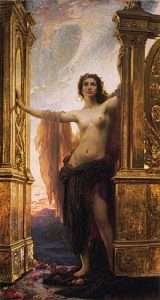
Goddess of Dawn. Gateway to the light. Refresher: "Dawn begins in the bones."
Side note:FIVE. Is the dilly bird that’s seldom seen but heard! Five is the symbol at your door, or at your feet, and five is a man alive. Occasionally five is the ferryman in the boat, but this is probably a juxtaposition of SIX, as will be seen later....The Fifth Sphere of the Tree of Life is that of Severity, linked to Mars. The magical power of the pentagram, or five-pointed star, associated with the ‘symbol at your door’, is well known, though few people have bothered to explain its significance. It is the shape of a man standing upright with arms outstretched. The Qabalah uses this symbol to suggest that a fifth element of divinity, present in man, may control or discipline the Elements. We see here whence Christ surrounded by the Four Evangelists developed. Five is the symbol of restraint, supposed to banish demons. This is simply because it is linked in the ancient symbolism to the Fifth Sphere, where Seraphim with fiery swords purge away evil. From here it degenerated into common magic, wherein powerful entities are supposed to be at the mercy of the Medieval wizard {'Solomon'?}, to divulge great wealth, or to captivate desirable virgins. The symbol need not be sought far from home, for it is one of those displayed in the English Sword Dance, woven out of interlocking swords.
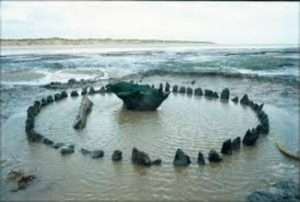
As for what the rituals at Holme I and II may have involved, Dr Nance’s paper delves into folkloric beliefs relating to the changing of the seasons, linking these to the solid wall formed by the original arrangement of Holme I’s posts, and explores ideas of the symbolic significance of the penned cuckoo, and of sacral kingship. He also highlights the monument’s alignment with the sun during the summer solstice. The full paper is published at https://link.springer.com/article/10.1007/s10708-024-11088-5.
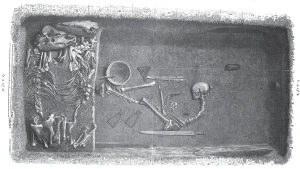
The tomb at the center of the debate is known as Bj 581, after its location when it was excavated at the Birka settlement on the island of Bjorko, which is west of Stockholm, with easy access to the Baltic Sea. (Unesco designated the settlement a World Heritage Site in 1993). Contains a sheathed sword.
These sword dances are undoubtedly magical in origin, as has been pointed out by Violet Alford in her thorough work Sword Dance and Drama. The patterns of these weaving dances are actually those of cosmic evolution, expressed in a similar way to that of the Dilly Song. Original expressions of the old Mysteries would have involved both dance and song, linked to cosmic exposition. The ‘Dilly’ bird which perches upon the Tree of Life may be seen as a cult-bird, such as the woodpecker or the cuckoo, which are both seldom seen but heard; but it is more likely that the ‘Dillies’ and ‘Gillies’ are rhyming whimsy, derived from other words now lost. The same sort of non-sense is common in folksong choruses and mouth-music to fill musical phrases, while corrupt lines in folksongs are retained with no reference or concern for their lack of meaning (see, for example, Little Suzy and her hoppers with silver strings, already mentioned in The Two Brothers, where hoppers is a corruption of harping....
'Octave'?
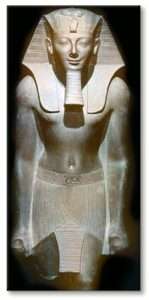
Happy or sad?

Glauberg Warrior. Whats the remedy for mad, bad or sad ?
It has been suggested several times that the word Dilly may be derived from the Welsh DILLYN, meaning pretty or gay {'JOY'?}, and the Welsh DILLYNION, meaning bright jewels. This interpretation originated with Baring-Gould. The Tree of Life, curiously, is often described as Ten Jewels, or Ten Lights. This same Tree appears in the carol Leaves of Life, with Seven Virgins sitting under it. The Serpent coiled around the Tree, found in the ballad The Lailly Worm, is not only the Serpent of the Garden of Eden, and the Dragon of Saint George, but also the Great Serpent upon the Tree of Life whose folds rise ‘even unto the Abyss’ {'YHW'?}. The convolutions of this worm represent the paths of connection between the Spheres, or the pattern of power that links the fallen beings to the divine worlds {'twentythree'?}. It cannot be over-emphasised, even at the risk of repetition, that we are looking briefly at a manner of conceptualising, and not at a specific system of cosmic interpretation. There are at least two cosmic schemes within the Dilly Song, plus their later Christian accretions. The first is the Sphere-by-Sphere descent of the standard Tree of Life, while the second is the numerical computation of 1-4, as in the Circled Cross. The exact linkage of these two glyphs has been a source of centuries of constant and violent argument between would-be Seekers after Peace. The whole problem is easily resolved by the simple geometry of any given sphere in mathematics, but this is not the subject in hand. {'Where is Saint George: Pagan Imagery in English Folksong' / B. Stewart}.
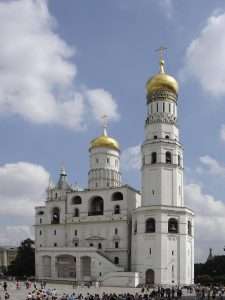
Right angled triangle?
Continued: ''The Cathedral of Vasily the Blessed (Russian: Собо́р Васи́лия Блаже́нного, tr. Sobór Vasíliya Blazhénnogo), commonly known as Saint Basil's Cathedral, is an Orthodox church in Red Square of Moscow, and is one of the most popular cultural symbols of Russia. The building, now a museum, is officially known as the Cathedral of the Intercession of the Most Holy Theotokos on the Moat, or Pokrovsky Cathedral.[5] It was built from 1555 to 1561 on orders from Ivan the Terrible and commemorates the capture of Kazan and Astrakhan. It was the city's tallest building until the completion of the Ivan the Great Bell Tower in 1600.
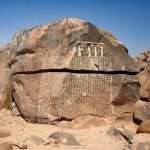
'Crack between the worlds'? i,e., in reference to ''a becoming''.
AND/OR: ''Ring the BELLS that still can ring. Forget your perfect offering. There is a crack in everything. That's how the light gets in.'' {Prologue: 'Dreams of Isis' / N. Ellis].
Arthur Eddington who became the Secretary of the Royal Astronomical Society, one of a few to understand General Relativity, well enough to explain it. Some, however called him, Eddington....136 + 1.
Side note: One hundred and thirtysix 'walking' canes in the tomb of Tutankhamun. 'One' of which was especially made by the 'boy king' himself. ['King Tut: 100 Anniversary Special' / 2022].
"It is shocking that such a profound insight into the philosophical implications of the theory of relativity has had little impact on physicists, it is dismaying that Godel's ideas have failed to catch the attention of philosophers.[ i.e.,that ''time'' is based only on our particular 'internal' experience, and not an actual feature of the physical universe. Customer review / Amazon].

Wolfgang Pauli ?
"At first i thought of the Astral Plane [Explained elsewhere, before those first impressions take hold], as a parallel Space/Time continuum. The idea was heavily influenced by science fiction and, in retrospect, contained a germ of truth. But it was not the whole truth ; not even a good approximation of the whole truth. Later, it seemed the 'Plane' must be Time, considered as a fourth dimension. That idea came from Ouspensky, who argued that a three - dimensional creature operating in a two-dimensional world must produce miraculous effects. It might, for instance, escape from the 'walls' of a square by stepping over them. From a two-dimensional viewpoint, with no conception of height, a miracle would have occurred. Perhaps then miracles in the three dimensional world are simply manifestations of a fourth dimension, imperfectly 'experienced' as Time." [Chapter one, 'Astral Doorways' by J. Brennan].
And/or...''Time must never be thought of as pre-existing in any sense; it is a manufactured quantity." [Hermann Bondi - from the book 'About Time:Einstein's unfinished Revolution' / P. Davies].
''Manufactured'' = 'created' in the personal sense of the word.
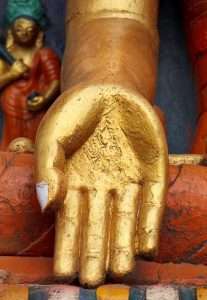
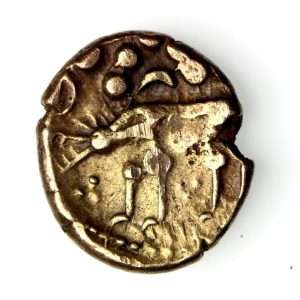 A {working} example: "Tis true without lying, certain and most true. That which is below is like that which is above and that which is above is like that which is below to do the 'miracles' of the one thing..." ['Emerald Tablet'].
A {working} example: "Tis true without lying, certain and most true. That which is below is like that which is above and that which is above is like that which is below to do the 'miracles' of the one thing..." ['Emerald Tablet'].
Follow the title to 'see' it in its broader context.
" A few years later he [Wolfgang Pauli] was to come across the same numbers again in Carl Jung's psychology, based as it was in alchemy. He was adamant that ''in neither case was it by any means Mr. C. Jung who suggested it to me, nor was there an advance conscious intention for me to grapple with figuring out the problem of three and four. Consequently i am rather certain that objectively there is an important psychological and, perhaps, natural philosophical problem connected with these numbers." [Chapter 5, '137: Jung, Pauli and the Pursuit of a Scientific Obsession]. Try ''120''.
"...The lower three 'spheres' are related to worldly consciousness and the upper four are related to spiritual consciousness and 'enlightenment'. Therefore, the lower must be sublimated into the higher ones." [Extract from the book by S. Ashby].
Question. Coincidence?
The brooch of Odysseus.
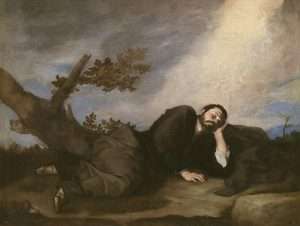
What is your name?” the man asked. “Jacob,” he replied. Then the man said, “Your name will no longer be Jacob, but Israel, because you have struggled {striven} with God and with men, and you have prevailed.”
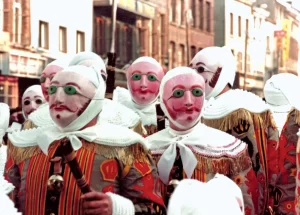
Shrove Tuesday - Belgium.
The etymology of the name is unknown. Ancient authors linked the name to the Greek verbs odussomai (ὀδύσσομαι) "to be wroth against, to hate",[8] to oduromai (ὀδύρομαι) "to lament, bewail",[9][10] or even to ollumi (ὄλλυμι) "to perish, to be lost".[11][12] Homer relates it to various forms of this verb in references and puns. In Book nineteen of the Odyssey, where Odysseus' early childhood is recounted, Euryclea asks the boy's grandfather Autolycus to name him. Euryclea seems to suggest a name like Polyaretos, "for he has much been prayed for" (πολυάρητος) but Autolycus "apparently in a sardonic mood" decided to give the child another name commemorative of "his own experience in life":[13] "Since I have been angered (ὀδυσσάμενος odyssamenos) with many, both men and women, let the name of the child be Odysseus".[14] Odysseus often receives the patronymic epithet Laertiades (Λαερτιάδης), "son of Laërtes".
It has also been suggested that the name is of non-Greek origin, possibly not even Indo-European, with an unknown etymology.[15] Robert S. P. Beekes has suggested a Pre-Greek origin.[16] In Etruscan religion the name (and stories) of Odysseus were adopted under the name Uthuze (Uθuze), which has been interpreted as a parallel borrowing from a preceding Minoan form of the name (possibly *Oduze, pronounced /'ot͡θut͡se/); this theory is supposed to explain also the insecurity of the phonologies (d or l), since the affricate /t͡θ/, unknown to the Greek of that time, gave rise to different counterparts (i. e. δ or λ in Greek, θ in Etruscan).[17]
In the Iliad and Odyssey Homer uses several epithets to describe Odysseus, starting with the opening, where he is described as "the man of many devices" (in the 1919 Murray translation). The Greek word used is πολύτροπον, literally the man of many turns, and other translators have suggested alternate English translations, including "man of twists and turns" (Fagles 1996) and "a complicated man" (Wilson 2018).
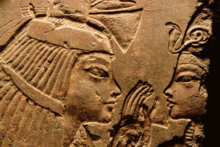
Tut's nurse. Any duck 'food' found within?
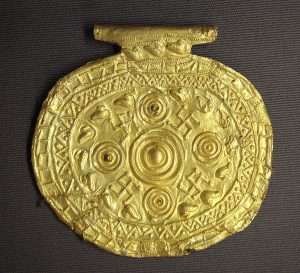 A working example: Here some loose ends can be tied up. The maze pattern has been shown to represent 'Spiral Castle' or 'Troy Town', where the sacred Sun-king goes after death and from which, if lucky, he returns. The whole myth is plainly presented on an Etruscan wine-jar from Tragliatella, dated from the late seventh century B.C. Two mounted heroes are shown; the leader carries a shield with a partridge device, and an ape-like demon perches behind him; his companion carries a spear and a shield with a duck device. They are riding away from a maze marked 'TR.UIA' ('Troy'). Apparently the sacred king, though due to die like the partridge in the brushwood maze, and be succeeded by his tanist, has escaped. How he escaped, another picture on the same vase shows: an unarmed king leads a sunwise procession, escorted by seven footmen each carrying three javelins and a huge shield with a boar device; the spear-armed tanist, whose badge this is, brings up the rear. These seven footmen evidently represent the tanist's seven winter months which fall between the apple harvest and Easter.
A working example: Here some loose ends can be tied up. The maze pattern has been shown to represent 'Spiral Castle' or 'Troy Town', where the sacred Sun-king goes after death and from which, if lucky, he returns. The whole myth is plainly presented on an Etruscan wine-jar from Tragliatella, dated from the late seventh century B.C. Two mounted heroes are shown; the leader carries a shield with a partridge device, and an ape-like demon perches behind him; his companion carries a spear and a shield with a duck device. They are riding away from a maze marked 'TR.UIA' ('Troy'). Apparently the sacred king, though due to die like the partridge in the brushwood maze, and be succeeded by his tanist, has escaped. How he escaped, another picture on the same vase shows: an unarmed king leads a sunwise procession, escorted by seven footmen each carrying three javelins and a huge shield with a boar device; the spear-armed tanist, whose badge this is, brings up the rear. These seven footmen evidently represent the tanist's seven winter months which fall between the apple harvest and Easter.
Side note: The wren-boys of Ireland sometimes use a holly-bush instead of an ivy-bush; the holly being the tree of the tanist, who killed the oak-king at midsummer.
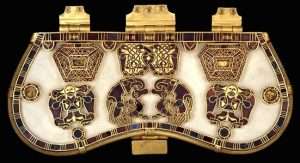
Sutton Hoo purse clasp: Wolfs / eagles and ducks.
CONTINUED: 'T' is the spear month, the month of the tanist; the bardic letter T was shaped like a barbed spear.
The identification of the pacific Jesus with the holly or holly-oak must be regretted as poetically inept, except in so far as he declared that he had come to bring not peace, but the sword. The tanist was originally his twin's executioner; it was the oak-king, not the holly-king, who was crucified on a T-shaped cross. Lucian in his Trial in the Court of Vowels (about 160 A.D.) is explicit: [Page 176 'The White Goddess'].
The Triple Muse, or the Three Muses, or the Ninefold Muse, or Cerridwen, or whatever else one may care to call her, is originally the Great Goddess in her poetic or incantatory character. She has a son who is also her lover and her victim, the Star-son, or Demon of the Waxing Year. He alternates in her favour with his tanist Python, the Serpent of Wisdom, the Demon of the Waning year, his darker self. [same].
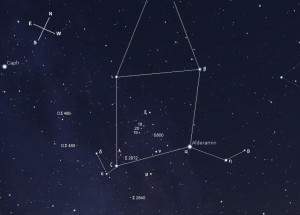
Cepheus. Question. Coincidence?

'Three and Four'?
As seen from a different perspective: {i.e.,''three and four''}: "All life forms have cycles of birth, growth, death, and renewal that are mirrored in the progressive of the moon's cycle. Many cultures, in an attempt to conceptualize the wholistic meaning of the moon's cycle, have subdivided it in terms of three phases and four quarters. The threefold division, based on the triangle {which is a feminine polarity image}, consists of three phases: the waxing new moon of increasing light, the full moon that is totally illuminated, and the dark waning moon of decreasing light. The four fold division, derived from the square or cross {which is a masculine polarity symbol}, yields the first quarter moon, the full moon, the last quarter moon, and the new moon, which is back to back with the dark moon {'Janus' link?}. When the fourfold division of the moon's monthly cycle around the earth is again quartered, it yields eight distinct lunar phases. They are named the new, crescent, first quarter, gibbous, full, disseminating, last quarter, and balsamic." [Page 65-68 'Mysteries of the Dark Moon'].
N.B. 'Division' and 'multiply' examples see index King James Study Bible.
Try ''eight'' to take something further while remembering - ALL as a means - towards understanding a mind-set.
Something extra: ''Paracelsus goes on to discuss a great many arcane remedies, since diseases {'snake bite'?} shorten life and have above all to be cured. The chief among these cures are 'gold' and 'pearls'. A peculiar potency is attributed to Cheyri {yellow wallflower}...which preserves the microcosmic body...not out of the corporeal, but out of that which preserves the corporeal. This is the balsam, the 'life' principle, the spirit of mercury.'' [Pages 135/8 +151 'Alchemical Studies' / C. G. Jung].

''The Mortarboard is an American national honour society for college seniors. It has 231 chartered collegiate chapters nationwide and fifteen alumni chapters.'' [Wiki].
A working example: ''After the initial set of rituals, there are six texts for the rite of Opening of the Mouth {utts. 37-42}, which together make up the second part of the litergy i.e., the texts on the north wall of the sarcophagus chamber in the pyramid of Unas {Pyramid Texts}. The mouth is split open using an instrument called a peseshkef. The word is composed of two parts: pesesh implies DIVISION and refers to either the shape or function of the instrument {possibly both}, while kef refers to the material out of which it was made - flint. Hence its name means ''the divided or dividing instrument of flint.'' Its exact purpose has been the subject of intense debate.'' [Page 190 'Shamanic Wisdom in the Pyramid Texts' / J. Naydler].
'Flint' to enlarge.
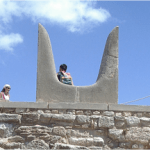
Fish tail or horn?
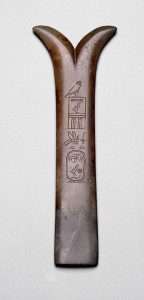 ''The Peseshkef, a prehistoric flint knife in the shape of a fish tail, was used in Egypt to cut the umbilical cord at birth, circa 5000 BC. This was the first special-purpose surgical instrument. Because of the importance of rebirth in the Egyptian religion, a stylized knife with magical properties became part of the equipment for the "opening of the mouth" ceremony to permit a mummy to partake of nourishment in the afterlife. It also became the emblem of the birth goddess, Meskhenet.''
''The Peseshkef, a prehistoric flint knife in the shape of a fish tail, was used in Egypt to cut the umbilical cord at birth, circa 5000 BC. This was the first special-purpose surgical instrument. Because of the importance of rebirth in the Egyptian religion, a stylized knife with magical properties became part of the equipment for the "opening of the mouth" ceremony to permit a mummy to partake of nourishment in the afterlife. It also became the emblem of the birth goddess, Meskhenet.''
Day or Night journey?
The REAL questions, however, remain the same.
''Embalming'' to enlarge.

'Glass' of wine or water?
REFRESHER: "The Theme, briefly, is the antique story which falls into thirteen chapters and an epilogue, of the birth, life, death and resurrection of the god of the Waxing year; the central chapters concerns the gods losing battle with the god of the Waning year for the love of the capricious and all powerful Threefold goddess....The poet identifies himself with the god of the Waxing year and his Muse with the goddess; his anima; the rival is his blood brother, his other self, his weird {'shadow' aspect}." [Page 24 'The White Goddess'/ R. Graves].
Women's Mysteries. M. Harding.
Try ''Battle of the Trees'' to take it further. The parts within the whole. To ''see'' that piece of work in its larger context.
 "True art has never really had need of words - and were our educators and mentors more intelligent about these things - then they would ensure that the modern theory about the subconscious {which is really the old wine of the initiates} should be applied to theories of aesthetics in a more convincing way. Art speaks to what is now called the 'subconscious' within man, and it is the function of the intellect to give a more or less garbled version of what the 'guardian of the subconscious' permits it to realize." ['The Secret Zodiac'].
"True art has never really had need of words - and were our educators and mentors more intelligent about these things - then they would ensure that the modern theory about the subconscious {which is really the old wine of the initiates} should be applied to theories of aesthetics in a more convincing way. Art speaks to what is now called the 'subconscious' within man, and it is the function of the intellect to give a more or less garbled version of what the 'guardian of the subconscious' permits it to realize." ['The Secret Zodiac'].
Side note: Alice Roberts {'Britain's Biggest Dig' / September/2020} finds ''extremely strange'' artefacts buried with 'owners'. A 'brick' inside a skull is a common find {'philosopher's stone'?}. A marmalade jar another {'glass' and 'sweet' link}. A wine goblet - without the base - is also found in the course of the digs. Symbolic intent only?
Question. Would a brick sink or float? That link to what a 'wine glass' represents. Did any of those individuals belong to a ''mystery club''? Same one? Understand subject material to gain a possible insight - beyond ''naughty medical students''.
Try ''scoria'' to 'see' from a different perspective.
And/or: ''Finally, a term close to the word 'lamp', expresses all that which rises and comes to the surface, scum, foam, scoria etc. And this indicates, for whomever possesses a smattering of hermetic knowledge.....'' [Page 330 'The Dwellings of the Philosophers' / Fulcanelli].
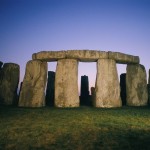
Dross?

Exalted?
Something extra: ''I realise that i have been obsessed with removing the dross and scoria that can in fact only be washed away up to a point - beyond which there must always remain a residue of impurity. It is the glory of the Work that its dross also can be raised up. The Albedo can not only suceed inspite of the remaining stain, but because of it. It is the nature of Sol, may he rise never so high, always to bear with him a reminder of the sulphurous darkness where he died and decayed. Only in the final accounting, perhaps when the body is 'exalted' and made volatile can the last dark vestige of fleshliness be wiped out and the corporeal spirit descend into its spiritual body.'' [Page 323 'Mercurius'].
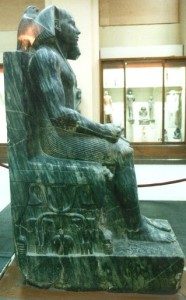
'Front' or 'back' of the head?
''Then finally comes the Lady {of the house?} , who hesitantly and looking surprised, is following the thiasos. Her 'marriage' will be the fulfilment of Dionysian mysteries, but surely only of substitute mysteries, accessible by a back door." [Page 362 'Dionysos' / C. Kerenyi].
Back door/Front door?
Question. What would the 'front door' be represented with?
"From the state of the male figures it can be inferred that there was drinking in the larger room, probably from a krater placed in the center.....it was a sacred action....in preparation for the Greater Mysteries." [Page 363 same book].
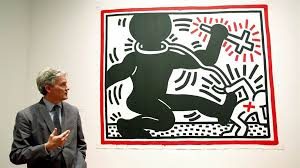 From a different perspective: ''The temple is within man in the sense that man is the temple of the work of nature, just as the temple as human work can only be the image of man...This house is always the symbol of the man who has constructed it....Cosmic man within terrestrial man...We are in a desert when we question ourselves; when in our interrogation we oppose ourselves to the universe, this desert becomes the parvis in front of and outside the temple and then takes on the aspect of an obstacle {Colonnade/ Pavilion / kiosk?}. This dialectic between Ego and Self is the enclosing wall that separates unitary paradise from the universe of creation....Choice opens or closes the door of the temple where light without shadow reveals the cause of the binary world, the world of antinomies...Giving the house to its Master? This expression can have but a single intention, which is to ready the ''house'' {temple or human body} for the coming of the 'Master', who will animate it. Were man not formed in the 'image of god', the breath of divine inspiration could never have animated him....Whoever manages to cross the threshold recognizes that the material, the feminine, the passive, and the aquatic in him is moon, and that the active, the warm, the ardent, and the formless is the sun. He will know that in the world of duality, he projected this moon and sun into the sky. He had forgotten that they were inside him and saw them only from the outside of himself. This is the site, or moment, known as the ''reversal of the lights'' when intelligence comes to the heart." [Pages 19/23 'The Egyptian Miracle: An Introduction to the Temple' / R. A. Schwaller de Lubicz].
From a different perspective: ''The temple is within man in the sense that man is the temple of the work of nature, just as the temple as human work can only be the image of man...This house is always the symbol of the man who has constructed it....Cosmic man within terrestrial man...We are in a desert when we question ourselves; when in our interrogation we oppose ourselves to the universe, this desert becomes the parvis in front of and outside the temple and then takes on the aspect of an obstacle {Colonnade/ Pavilion / kiosk?}. This dialectic between Ego and Self is the enclosing wall that separates unitary paradise from the universe of creation....Choice opens or closes the door of the temple where light without shadow reveals the cause of the binary world, the world of antinomies...Giving the house to its Master? This expression can have but a single intention, which is to ready the ''house'' {temple or human body} for the coming of the 'Master', who will animate it. Were man not formed in the 'image of god', the breath of divine inspiration could never have animated him....Whoever manages to cross the threshold recognizes that the material, the feminine, the passive, and the aquatic in him is moon, and that the active, the warm, the ardent, and the formless is the sun. He will know that in the world of duality, he projected this moon and sun into the sky. He had forgotten that they were inside him and saw them only from the outside of himself. This is the site, or moment, known as the ''reversal of the lights'' when intelligence comes to the heart." [Pages 19/23 'The Egyptian Miracle: An Introduction to the Temple' / R. A. Schwaller de Lubicz].
'Easter Island'.
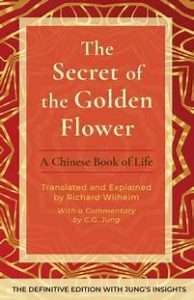
'Stopping and Seeing' / T. Cleary.
Question. Denderah?
A practical example {interview with Billy Connolly - in relation to life, while coping with Parkinson's disease }: "I believe you're making art now Billy''?
 Connolly: ''Yes i'm very artsy these days - i'm trying to think up of esoteric, bizarre ways to describe my drawings, but there just wee drawings - I draw little men and women and strange shapes....I started by mistake, I was in {M}ontreal and visited both a pet shop and an Art shop. Stayed longer in the later. Bought pens and paper....never drawn in my life...couldn't do it at school, not even matchstick men. But I started off doing Islands ...these weird {'shadow'?} islands with the sea around them. And weird shapes within these islands....I'm using my brain in a normal fashion, but its working with the Parkinson in it; its difficult to explain, but I get a great deal of joy from it - I put on the Incredible String Band and the Hangman's Beautiful Daughter and then I start to draw, I don't know if it influences me in the drawing but I feel great when its playing - its a joy, a joyous thing...although it doesn't look like a joyous thing, it looks like a painful thing sometimes - the people seem to be in bizarre odd situations - so I add balance to it."
Connolly: ''Yes i'm very artsy these days - i'm trying to think up of esoteric, bizarre ways to describe my drawings, but there just wee drawings - I draw little men and women and strange shapes....I started by mistake, I was in {M}ontreal and visited both a pet shop and an Art shop. Stayed longer in the later. Bought pens and paper....never drawn in my life...couldn't do it at school, not even matchstick men. But I started off doing Islands ...these weird {'shadow'?} islands with the sea around them. And weird shapes within these islands....I'm using my brain in a normal fashion, but its working with the Parkinson in it; its difficult to explain, but I get a great deal of joy from it - I put on the Incredible String Band and the Hangman's Beautiful Daughter and then I start to draw, I don't know if it influences me in the drawing but I feel great when its playing - its a joy, a joyous thing...although it doesn't look like a joyous thing, it looks like a painful thing sometimes - the people seem to be in bizarre odd situations - so I add balance to it."
Interviewer: ''Isn't your wife Pamela trained in these sort of things; Psychology?
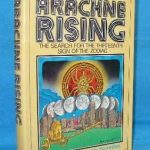
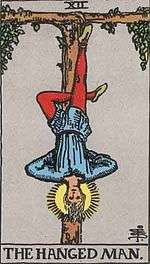 Connolly: ''Yes, she is. I asked her opinion recently on a drawing I did of a scantly clad woman with a blindfold on. Smut she said. We laughed and moved on. I did a thing called 'purgatory' - its a man at the bow of a ship with a blindfold on - and he's being rowed by a reptile. I like it but I don't know what it is, and I have no intention of digging any deeper into it - to see what it is. I like the relationship the way it is." ['Life, death and Laughter' / BBC 2].
Connolly: ''Yes, she is. I asked her opinion recently on a drawing I did of a scantly clad woman with a blindfold on. Smut she said. We laughed and moved on. I did a thing called 'purgatory' - its a man at the bow of a ship with a blindfold on - and he's being rowed by a reptile. I like it but I don't know what it is, and I have no intention of digging any deeper into it - to see what it is. I like the relationship the way it is." ['Life, death and Laughter' / BBC 2].
All those keys mentioned BUT in the unconscious SENSE OF THE WORD. All enlarged throughout.
Question. Psychotic 'information' only?
Try ''hang'' / ''hung'' to begin with.
Working ancient example: Annual battle between Horus and Set at Edfu.
"Crocodile".

The Sycamore Gap Tree or “Robin Hood Tree” is a sycamore tree (Acer pseudoplatanus) standing next to Hadrian's Wall in Northumberland, England. The lake of Crag Lough and the village of Once Brewed are nearby, as is the Twice Brewed Pub, useful for trekkers at days end.
 Lizard Point (from Cornish an Lysardh 'the high court') in Cornwall is at the southern tip of the Lizard Peninsula. It is situated half-a-mile (800 m) south of Lizard village in the civil parish of Landewednack and about 11 miles (18 km) southeast of Helston.[1]
Lizard Point (from Cornish an Lysardh 'the high court') in Cornwall is at the southern tip of the Lizard Peninsula. It is situated half-a-mile (800 m) south of Lizard village in the civil parish of Landewednack and about 11 miles (18 km) southeast of Helston.[1]
Lizard Point is the most southerly point on mainland Great Britain at 49° 57' 30" N.[2] With the exception of parts of the Isles of Scilly, it is the southernmost part of England and the wider United Kingdom. Lizard Point is for many ships the starting point of their ocean passage and a well known shipping hazard. The Lizard Lighthouse is situated at Lizard Point. Immediately below the lighthouse, situated in what used to be a hotel, is the YHA Lizard Youth Hostel. The area is famous for its carved serpentine items,[5] which range from ornaments to the pump handles in the Five Pilchards public house, in Porthallow.
Porthallow, meaning "port at the end of the moor", was a flourishing fishing village in the 13th century. It was first used as a fishing base by Beaulieu Abbey.
Beaulieu Abbey was a Cistercian abbey in Hampshire, England. It was founded in 1203–1204 by King John[1] and (uniquely in Britain)[2] populated by 30 monks sent from the abbey of Cîteaux in France, the mother house of the Cistercian order. The Medieval Latin name of the monastery was Bellus Locus Regis ("The beautiful place of the king"') or monasterium Belli loci Regis.[3] Other spellings of the English name which occur historically are Bewley (16th century) and Beaulie (17th century).[4]

Remedy? "Perhaps we may start by admitting that we are wounded {naked?}. ‘The metaphysician (is a) wounded man. A wounded man is not an agnostic — he just has different questions arising out of his wound. Like the shaman, the wounded healer is one who knows that the true cause of pain is loss of Inner reality — the Inner Kingdom. This realization fired the Gnostics to go upon their own voyage of discovery, just as it later inspired those who went on quest for the Grail and the healing of the Waste Land. Truly, there are many ways of achieving the Great Work." {Page 253 'The Western Way'}.

Storm or limpdick mont? Being paid? Backward Culture? Northern Irish problem or a world wide political one? i.e., always looking for excuses to FORWARD their OWN political ends. Teamplayers?
From a different perspective: ''There is a curious detail which occurs several times in these stories. It is said that so many of the kings were 'blind'. Anysis-Bocchoris, were either perished in, or escaped from, the flames was blind....Sesoosis, who escaped the 'fire', finally became blind, as did Pheros who tried to 'control' the Nile and the 'storm'.....It will be remembered that blindness was much in evidence at Letopolis, the 'Thunderbolt' city. The shrewmouse was sacred there because it was thought to be blind, and the name of the god who preceded Horus there was Mhnty-n-irty: 'He who is without eyes'. The commonly accepted story tells how Horus himself was partially blinded by Seth, the storm god.....It can hardly be by chance that this alleged 'blindness' has been inserted in the classical tales of the Egyptian kings....." [Page 76 'The Sky Religion in Egypt' / G. Wainwright].
Understand what they infer by that universal ''bit'' gives a deeper meaning.
Side note: ''The literal meaning of muscle {Latin} = 'little mouse'....'' [The Chase' / ITV].
Continued: Try 3:7 for more on Connolly.
And/or ''Art'' in relation to the ''Theme''. Enlarged throughout.
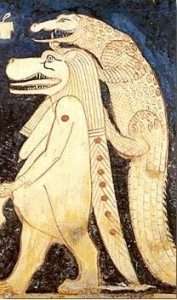
Which ones the ''reptile''? Art only?
A working example {i.e., as seen from a different viewpoint. The original one?}: "When I was writing down these fantasies, I once asked myself, 'What am I really doing? Certainly this has nothing to do with science. But then, what is it?' Whereupon a voice within me said : 'It is art'. I was astonished. It had never entered my head that what I was writing had any connection with art. Then I thought: 'Perhaps my unconscious is forming a personality that is not me, but which is insisting on coming through to expression...." [Page 210 'Memories, Dreams and Reflections' / C. G. Jung].
And/or: "At first it was the negative aspect of the anima that most impressed me. I felt a little awed by 'her'. It was like the feeling of an invisible presence in the room. Then a new idea came to me: in putting down all this material for analysis I was in effect writing letters to the anima, that is, to a part of myself with a different viewpoint from my conscious one." [Page 211 same book].
90 degrees or 180?
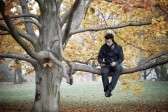 "Psychology and esotericism set out to explore the darkness outside of our knowledge, whether it be dwelling in the 'unconscious' or the 'astral', the mundus imaginalis, or the dark side of the Tree of Life." [Extract from the book 'The Magister']. Define ''astral'' before those first impressions define something else. Link that answer up to that universal framework.
"Psychology and esotericism set out to explore the darkness outside of our knowledge, whether it be dwelling in the 'unconscious' or the 'astral', the mundus imaginalis, or the dark side of the Tree of Life." [Extract from the book 'The Magister']. Define ''astral'' before those first impressions define something else. Link that answer up to that universal framework.
His ''weird''?

'Apple' of the eye or 'eye' of the storm?
Rene Descartes, French philosopher, mathematician and writer..."While still a young soldier he had a dream in which an angel appeared to him, and revealed to him his mission in life...and how to achieve it. According to his own account of this dream, the 'angel' said to him, 'The conquest of nature is to be achieved by measure and number." [Page 477, 'The Sacred History'].
'Stretching the Chord'.
Working example: In modern times, it is fairly common for a dignitary or well-known personality to symbolically initiate the construction of a new building with a “ground-breaking” ceremony. The ancient Egyptian equivalent was the “foundation rituals” which conferred the protection of the gods on the building works and the finished building.
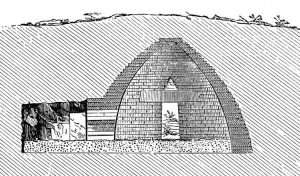
A beehive tomb, also known as a tholos tomb (plural tholoi) (Greek: θολωτός τάφος, θολωτοί τάφοι, "domed tombs"), is a burial structure characterized by its false dome created by the superposition of successively smaller rings of mudbricks or, more often, stones. The resulting structure resembles a beehive, hence the traditional English name. ..In Greece, the vaulted tholoi are a monumental Late Bronze Age development. Their origin is a matter of considerable debate:..

A corner of the Temple Mount.
The practice of burying “foundation deposits” was standard in the construction of temples, palaces, tombs, and forts. Deposits were placed at the corners of buildings or at points of importance in the structure. The location of the deposits was dependent on the type of structure. Temples would have a deposit at each corner, while tombs would have deposits by their entrances. Deposits were also placed under obelisks, columns, hypostyle halls, sanctuaries and along the central axes of the buildings....The foundation rituals for temples actually consisted of eight separate rituals (or eleven during the Ptolemaic Period) of which the burying of foundation deposits was only one. The rituals were supposed to be conducted by the Pharaoh, but in reality they were generally conducted on his behalf, with the pharaoh taking on this role on a few of the more important structures....
“Stretching the cord” (“pedj-shes”) was one of the most important elements of the whole foundation ritual. Its importance was such that in later times the entire ritual up to the point of construction was known as “pedj-shes”. From as early as the Second dynasty, the ceremony was closely associated with the goddess Seshat, “Mistress of the House of Architects”. The “cord” in question is the mason’s line which was used to measure out the dimensions of the building and align the building with the stars or points of the compass....
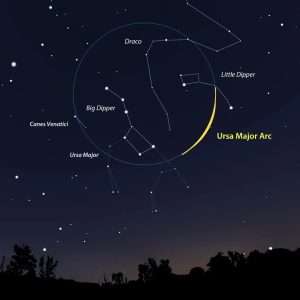
Bears were venerated by our ancients as being the strongest animal to roam the land.
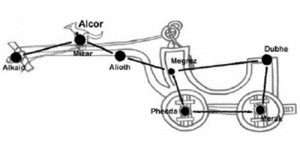
In North Germany Alkor, as there written, has been der Hinde, the Hind, or Farm Hand; in Lower Germany, Dumke; and in Holstein, Hans Bumken, Hans the Thumbkin, — the legend being that Hans, a wagoner, having given the Saviour a lift when weary, was offered the kingdom of heaven for a reward ; but as he said that he would rather drive from east to west through all eternity, his wish was granted, and here he sits on the highest of the horses of his heavenly team. A variant version placed Hans here for neglect in the service of his master Christ ; and the Hungarians call the star Oontzol, with a somewhat similar tale. Another Teutonic ston was that their giant Orwandil, our Orion, having frozen one of his big toes, the god Thor broke it off and threw it at the middle horse of the Wagon. where it still remains.
It is often noted that the Ancient Egyptians were incredibly accurate in the laying of foundations and the orientation of their buildings. It is thought that they used a tool known as a “merket”, a notched stick though which the constellation of the Great Bear could be viewed to enable the builders to calculate the position of true north and align their buildings accurately.
“I hold the peg. I grasp the handle of the club and grip the measuring cord with Seshat. I turn my eyes to the movements of the stars. I send forth my gaze to the Bull’s thigh (the Great Bear). I count off time, I watch the clock, I establish the four corners of your temple”
Words spoken by the Pharaoh, from an inscription at Edfu temple.
Hoeing the ground (“ba ta”) bears the most marked resemblance to modern ceremonies. In this ritual the pharaoh (or priest representing him) was considered to be the heir of the Earth god (Geb). He would start the first foundation trench of the temple with a wooden hoe, and so was thought to symbolically cut through the earth to the water table which represented the upper limit of Nun, the primeval water god.
 The pharaoh (or priest representing him) would use a wooden mould to make a mud brick to represent the bricks which were originally used for all buildings (before they had mastered stone masonry). These single mud bricks were often inscribed with the name of the king who dedicated the building and then buried in one of the foundation deposits.
The pharaoh (or priest representing him) would use a wooden mould to make a mud brick to represent the bricks which were originally used for all buildings (before they had mastered stone masonry). These single mud bricks were often inscribed with the name of the king who dedicated the building and then buried in one of the foundation deposits.
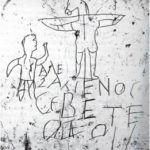 AND/OR: "Egyptian cubits filled with water, are called by me, basic load 'netto', and basic load 'brutto', I have given them these names because they were considered the standard amount that could be carried by a pack ass. In Akkadian these units are called 'imeru', which means "ass". The Masoretic text of the Old Testament uses a different punctuation of vowels under the consonants to distinguish between the term 'hmr' as referring to an ass, and the same term as referring to a unit of measure." [Notes on the relation of ancient measures to the Great pyramid, by Livio Catullo Stecchini. Taken from 'Secrets of the Great Pyramid']. 'See' anything?
AND/OR: "Egyptian cubits filled with water, are called by me, basic load 'netto', and basic load 'brutto', I have given them these names because they were considered the standard amount that could be carried by a pack ass. In Akkadian these units are called 'imeru', which means "ass". The Masoretic text of the Old Testament uses a different punctuation of vowels under the consonants to distinguish between the term 'hmr' as referring to an ass, and the same term as referring to a unit of measure." [Notes on the relation of ancient measures to the Great pyramid, by Livio Catullo Stecchini. Taken from 'Secrets of the Great Pyramid']. 'See' anything?
"Empty your mind. Be formless, shapeless, like water. When you put water into a cup, it becomes the cup. When you put water into a bottle, it becomes the bottle. When you put water into a teapot, it becomes the teapot. Now water can flow....or it can crash. Be water my friend." [Taken from chapter five, 'The Warrior Within' {the philosophies of Bruce Lee} by J. Little.

Movement?

In what direction?
A working example: ''Good morning. Its sunny but cold this morning and the ice is breaking up, but it sounds amazing. So lets watch the 'ice show' together: Its so cool to watch the tide and the ice come in, smashing up against the rocks. The water is not trying to hold on to something - its just letting life move through it. I want to be more like that, allowing life to move through me. Not putting my attachments and expectations on everything.'' [Caley: 'Alone: Frozen' / S1 EP5].
Refresher: ''Not out but through.'' {C. Jung}.
'Day' or 'night journey'?
Both?
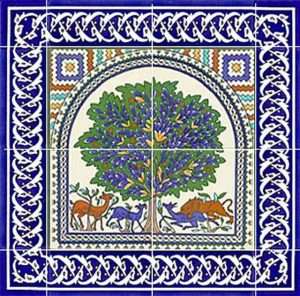
Refresher: Clearly the attainment spells the eclipse of the Dragon. Where light shines no darkness can there abide. For being the basis of the instinctual life, harnessed and chained to the needs and clearly perceived ideals of the psyche, the dragon shuns the sunbeams and the daylight. No longer do its projections and compulsive automatisms haunt the light of consciousness. No longer is the personality tortured as by some foul and evil presence. Its needs and dictates, once so imperious, cease their urgency, finding their proper place within the natural economy. AND/OR: Like the planetary spirit of Mercurius, the spirit of Saturn is “very suited to this work.” One of the manifestations of Mercurius in the alchemical process of transformation is the lion, now green and now red. Khunrath calls this transformation “luring the lion out of Saturn’s mountain cave.”’ From ancient times the lion was associated with Saturn.» Khunrath calls him the lion of the Catholic tribe,” paraphrasing the “lion of the tribe of Judah”—an allegory of Christ.?” He calls Saturn “the lion green and red.” In Gnosticism Saturn is the highest archon, the lion-headed Ialdabaoth,” meaning “‘child of chaos.” But in alchemy the child of chaos is Mercurius. The relation to and identity with Saturn is important because Saturn is not only a maleficus but actually the dwellingplace of the devil himself. Even as the highest archon and demiurge his Gnostic reputation was not the best. According to one Cabalistic source, Beelzebub was associated with him.*? Mylius says that if Mercurius were to be purified, then Lucifer would fall from heaven.®* A contemporary marginal note in a seventeenth-century treatise in my possession explains the term sulphur, the masculine principle of Mercurius,** as diabolus. If Mercurius is not exactly the Evil One himself, he at least contains him—that is, he is morally neutral, good and evil, or as Khunrath says: “Good with the good, evil with the evil.” #4 His nature is more exactly defined, however, if one conceives him as a process that begins with evil and ends with good. A rather deplorable but picturesque poem in Verus Hermes (1620) summarizes the process as follows: A weakling babe, a greybeard old, Surnamed the Dragon, me they hold In darkest dungeon languishing That I may be reborn a king. A fiery sword makes me to smart, Death gnaws my flesh and bones apart. {Alchemical Studies / C. Jung}. N.B. "Dawn begins in the bones."
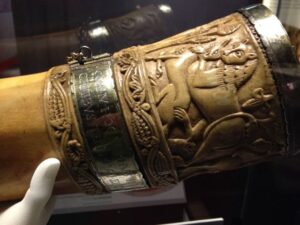
Made of ivory. To 'grip' or kill?
From a different perspective {with something extra}: ''The most important interpretation of Mercurius is his relation to Saturn....To the early alchemists it was lead not quicksilver that was associated with Saturn: ''My spirit is the water that loosens the rigid limbs of my brothers'' and/or: ''Quicksilver comes from the heart of Saturn.....The most perfect water and flower in the world.'' And/or: ''It is the power of the colour of water since water is 'destruction'....Khunrath calls this transformation ''luring the red/green lion out of Saturns mouth {'opening of the mouth'?}...A link to ''the lion of the tribe of Judah therefore Christ.'' [Pages 227/8 'Alchemical Studies'].

''A Wildling''.
"Nothing in nature can bring the mind continuous, unchanging happiness, because the mind itself changes constantly. Although we have the same stomach, we don't want to eat the same food every day. Although we wear the same shape, we don't wear the same outfit every day. The secret of our wanting changes, is that the mind changes. If it were always the same, why would it look for change? If we know that, we can just allow things to change without clinging to them. If something changes, we should let it go - something else will come. We should watch the changes like passing clouds. But normally we don't want to merely watch them. We want to hold onto a section without letting go. Then the tension comes in. Changes are like flowing water. If you just allow water to flow, it is very pleasant to sit and watch. But if you want to arrest the flow, and keep the water to yourself, you will have to construct a dam. Then the water will resist the dam and try to escape. There will be a struggle.

Achernar. The flat{est} Star in the Milky Way. Saturn the flatest Planet.
Although you may stop some of the water, another portion will overflow. So you must allow for spill out, or the dam will certainly break....All life is a passing show...If we learn to enjoy each change, we can recognize the beauty even in ageing. A ripe fruit has its own beautiful taste. When we just allow things to pass, we are free. Things will just come and go, while we retain our peace."[ Page 99 / 100 'The Yoga Sutras of Patanjali'].
'Beaver' to enlarge.
..............................
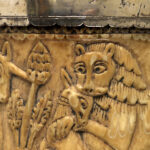
Lion or Dragon?
Side note: "Achernar - the End of the River - known by Arabian astronomers as 'farthest in the Stream'....Ulug Beg called it Al Thalim - the Ostrich - but Hyde rendered this - the Dam - as if blocking the flow of the stream to the south {Jordan?}...others called it the Furrow...to denote the track of a vessel {'plough'}...within the Stream of Ocean....It is a solitary star visible from the latitude of New York City in early winter evenings, low down in the south, on the meridian with Menkar of the Whale...Between it and Fomalhaut lie many small stars....called by Arabians Little Ostriches." [Star Names and Their Meaning' under Eridanus]. Try ''furrow''.
'Mans Search for Meaning' / Viktor Frankl.
'Straight South'?
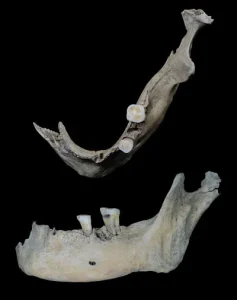
The human jawbone {of an elder woman} placed inside a whalebone vessel outside The Cairns broch. Ate nothing but fish. A taboo food. Among others 'Plaster' / 'jaw' / 'teeth' / 'tooth' to enlarge.
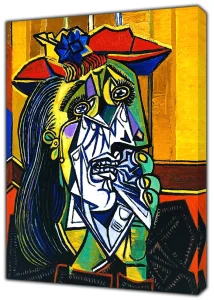
"The Weeping Woman {Picasso}: The violence and misery a woman has suffered are conveyed by the jagged lines and abstract facets of her face. In her clenched teeth is the handkerchief with which she also wipes her eyes, her tears are crystallized and caustic. As if her sorrow were inconsolable. So valuable are tears as a psychic factor that they have been depicted in myth and in dreams as precious jewels, golden amber, rain and the life-giving rays of the sun. Spontaneously, they overflow the swollen reservoirs of feeling, and the feelings may be as diverse as grief, joy, pain, excitement, compassion, relief or fear. We are not the only ones who cry. Primates, elephants and beavers are among the animals known to cry when they are upset. Human beings, however, “cry over onions, over spilled milk, over the frustration of threading a needle. We weep from unbearable sadness and simple boredom, from the thought of the future and the memory of the past....Indeed, tears of mourning are imagined by the Dagara people of Burkino Faso to carry the dead to the realm of the ancestors....The saltiness of tears intimately connects us to the primordial seawater, the containing matrix of being. In alchemy, tears belong to the operation of solutio; they represent a softening or melting of those aspects of the personality that have hardened and become inflexible. And as a form of the areanum sal, or salt, tears are emblems of both bitterness and of the bitterness that in being shed can be transmuted into wisdom." 'Gnashing'?
A working example: Towards the later 2nd or very early 3rd Century AD things inside the broch {Orkney} were changing. Several of the upright divisions that marked the use of different spaces had slumped or toppled or had been removed, showing that the previously formal layout of the space was giving way. Older hearth settings were no longer in use and were covered over by late floors and deposits.
New hearths were set directly up against the inner wall face of the broch and their damaging impact on the masonry can still be seen, as they scorched, and stained the walls red and black, and cracked the stones.The final use of the broch overall, seems to have been to process large numbers of small fish, maybe even using the broch as a smokehouse. Finally, the decision was taken to end the broch altogether.
"...the sealing of it." {Alice Roberts}.
Seamless?
'No leak at the seam'?
'Roof'?
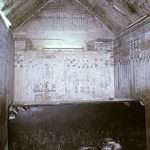
Inner/outer.
Question. Where would they move to?
In preparation for this momentous transformation in the life of the community, a series of interesting deposits were laid out on the uppermost floor of the interior. These included whole or large parts of animal carcasses, probably the remains of feasting events to mark the occasion. Whole pots were laid on the floor and smashed in situ. We now know, through the wonders of modern DNA analysis, that a large fin whale, presumably having stranded itself on a nearby beach, was also distributed across the last surface of the broch, as well as its lower infill.
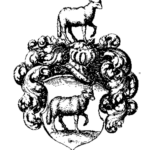
Lambspring.
Immediately outside the broch and close to the entrance a truly remarkable deposit was placed tightly against the broch wall. This involved a large whalebone vessel carved from the same fin whale whose bones were on the broch floor. Into this vessel were placed the remains of three newborn lambs and the mandible of an elderly human. Propped against the vessel were two right-side red deer antlers and pinning the vessel against the wall was a large saddle quern. This entire deposit would appear to represent an elaborate act of closure....The infill was undertaken in a series of very methodical and careful ways.

Goddess of Dawn. Gateway to the light.
Side note: "At Passover, every household or small grouping of people needed to sacrifice a lamb or a young goat....And according to the rubrics, the lambs not only had to be slaughtered: they also had to be skinned and butchered ready for roasting."
N.B. The 'altar stone' at stonehenge came from the Orkneys. Passover?
Question. In the Micro or Macro SENSE of the word?
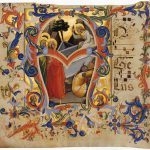
The 'three' Mary's at the tomb of Christ. Which one was the FIRST witness?
'Logos' to enlarge.
And/or: "The town where we find the Shepherd's Fields is next to Bethlehem. It is not, however, called Bethlehem, it is called Beit Sahour. In Hebrew Bethlehem means 'House of Bread,' but in Arabic and Aramaic, it means 'House of Flesh'. Beit Sahour - the shepherds town next to Bethlehem - means 'House of Those Who Stay Awake' or House of the Nightwatch.' Biet Sahour was named in tribute to the shepherds who were "keeping watch over their flock by night." The secret of the Bethlehem shepherds is not only that they were the first eyewitnesses of the Gospel but that they were also the ones who kept alive their story and shared it with others who shared it with St. Luke so that it was recorded for posterity."
And/or:

“Most certainly, I tell you, one who doesn’t enter by the door {gate'?} into the sheep fold, but climbs up some other way, is a thief and a robber."

Shepherd Kings?
"What i find most interesting about the appearance of the angels to the shepherds is their message and their song, because the angel's message and song unlock the secret of why the shepherd's were important to St. Luke. The angels message is: 'Be not afraid; for behold, i bring you good news of great joy which will come to all the people; for to you is born this day in the city of David {'eighteen'?} - a Savior, who is Christ the Lord. And this will be a sign for you: you will find a babe wrapped in swaddling cloths and lying in a manger. The angels song 'Glory to god the highest, / and on earth peace {Hotep?} among men with whom he is pleased.
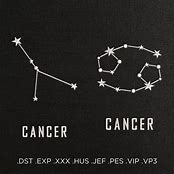 The SIGN of the manger, therefore, is the place where the shepherds will find the lord....Clever biblical scholars may have mined the Old Testament to find connections to the manger, the inn, and the swaddling cloths, but did Luke include these details as intentional allusions to the Old Testament prophecies?....The repetition of the important phrase, 'wrapped in swaddling cloth and lying in a manger', indicates a crucial element of the story that had to memorized because it was a "sign." It was also a sign that this part of the story could not be forgotten....Another intriquing hint that helps us recognise the secret of the shepherds is the that the town where we find the Shepherds Fields is next to Bethlehem. It is not, however, called Bethlehem it is called Beit Sabour....
The SIGN of the manger, therefore, is the place where the shepherds will find the lord....Clever biblical scholars may have mined the Old Testament to find connections to the manger, the inn, and the swaddling cloths, but did Luke include these details as intentional allusions to the Old Testament prophecies?....The repetition of the important phrase, 'wrapped in swaddling cloth and lying in a manger', indicates a crucial element of the story that had to memorized because it was a "sign." It was also a sign that this part of the story could not be forgotten....Another intriquing hint that helps us recognise the secret of the shepherds is the that the town where we find the Shepherds Fields is next to Bethlehem. It is not, however, called Bethlehem it is called Beit Sabour....
The name Beit Sahour has been translated variously as "House of the Magicians" by Palmer (1881),[5] and more recently on Palestinian websites as "House of Vigilance"[3] or literally as "House of the Night Watch".[4]
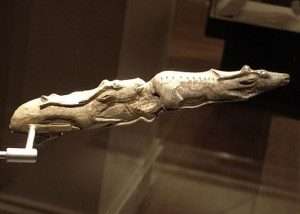
Two swimming reindeer on the tip of a mammoth tusk {'ivory'}. Female in front. Male behind.
Continued: Essentially, the upper resaches of the broch walls were systematically taken down and used to infill the interior space. This was no chaotic rubble tossing operation, however, and the act of infilling the broch with rubble was punctuated by acts of placing caches of artefacts and animal remains, including more of the fin whale carcase. At the same time the rubble from demolishing the upper reaches of the broch was also used around the eastern end of the broch exterior to cover over the whalebone vessel/human jaw deposit as well as infilling the village building, Structure O.
Fin whales are the second largest species on the planet and can grow to 27 metres long. They are also among the fastest whales in the sea, capable of bursts of 45KMH when hunting, or threatened. They can also dive fast and very deeply....The bones appear to relate to feasting that took place to mark the end of the broch {"the ceiling of it"}....
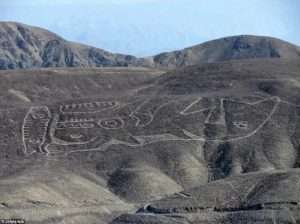
The Nazca whale.
Some have chop marks, suggesting butchery and perhaps bone-working. Others are slightly singed from being subjected to direct heat. The fin whale bones were found in a range of contexts across the broch – some came from the uppermost floor deposits while others were deposited into gaps in the walls.
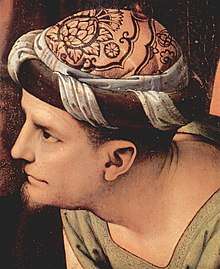
Bald innkeeper?
SIDE NOTE: Melusina comes into the same category as the nymphs and sirens who dwell in the ‘““Nymphidida,” the watery realm. In the treatise “De sanguine,” the nymph is specified as a Schrottli, ‘nightmare.’ Melusines, on the other hand, dwell in the blood. Paracelsus tells us in “De pygmaeis” that Melusina was originally a nymph who was seduced by Beelzebub into practising witchcraft. She was descended from the whale in whose belly the prophet Jonah beheld great mysteries. This derivation is very important: the birthplace of Melusina is the womb of the mysteries, obviously what we today would call the unconscious. Melusines have no genitals, a fact that characterizes them as paradisal beings, since Adam and Eve in paradise had no genitals either.“ Moreover paradise was then beneath the water “and still is.” When the devil glided into the tree of paradise the tree was “saddened,” and Eve was seduced by the “infernal basilisk.” Adam and Eve “fell for” the serpent and became ‘‘monstrous,” that is, as a result of their slip-up with the snake they acquired genitals.”
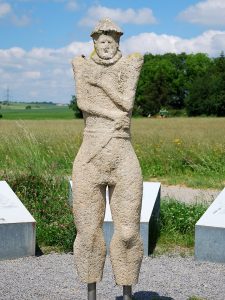
Copy of The Warrior of Hirschlanden (German: Krieger von Hirschlanden), a statue of a nude ithyphallic warrior made of sandstone, the oldest known Iron Age life-size anthropomorphic statue north of the Alps. Happy or sad?
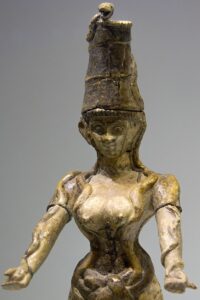
Snake goddess of Knossos. 'Peak/tower' hat? Any 'hair'?
But the Melusines remained in the paradisal state as water creatures and went on living in the human blood. Since blood is a primitive symbol for the soul,” Melusina can be interpreted as a spirit, or at any rate as some kind of psychic phenomenon. Gerard Dorn confirms this in his commentary on De vita longa, where he says that Melusina is a “vision appearing in the mind.” For anyone familiar with the subliminal processes of psychic transformation, Melusina is clearly an anima figure. She appears as a variant of the mercurial serpent, which was sometimes represented in the form of a snakewoman by way of expressing the monstrous, double nature of Mercurius. The redemption of this monstrosity was depicted as the assumption and coronation of the Virgin Mary.” {'Alchemical Studies' / C. Jung}.
CONTINUED: Fin whales prefer warmer waters for various reasons. They migrate to tropical climates during the mating season and for giving birth, while moving towards cooler waters during the feeding season. This adaptation allows them to find suitable habitats for reproduction and feeding, as warmer waters provide favorable conditions for feeding and reproduction4.
Boil/Roasted?
Go off the boil: to lose interest or become less urgent.
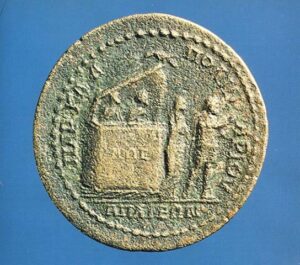
This large bronze medallion was struck 1700 years ago at Apameia Kibotos in Asia Minor (modern Turkey) near the mountains of Ararat where, it is said, Noah’s Ark came to rest after the flood.
And/or: I’ve been reading Joseph Campbell, as usual, and thinking about how to use light and dark in scenes to symbolise my character’s state in the upper and lower regions of the plot. The idea of the night-sea journey (die Nachtmeerfahrt¹) was described by ethnologist Leo Frobenius in his book, Das Zeitalter des Sonnengottes (The Age of the Sun God). He recognised the prevalence of the motif in myths from different parts of the world: the hero travels, often in the belly of a beast or in a vessel (a boat, an ark, a casket), across a dark, primordial sea, mimicking the unseen course of the sun after it sets in the west and then magically reappears in the east. Many ancient peoples surmised (as you probably would, if you hadn’t been brought up on the broth of the round world) that for the sun to perform this kind of feat, it had to travel under the earth or the sea. The sea reflects the sky and “extinguishes” the sun; also, it’s more penetrable than the earth, so it makes sense for a culture that lives near a sea to send their sun-gods down into it.
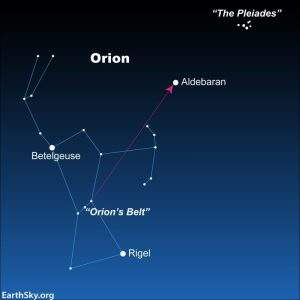
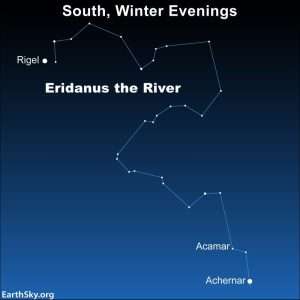
Cetus to enlarge.
I only recently learned of a similar journey that the moon makes, and if you’re a (world-)navel-gazer like me, you may also be unaware of it. Every month or so the “old moon” sets for the last time as a sliver in the eastern sky. For about three days it travels invisibly alongside the sun until, magically born anew, it appears on the third day at sunset, on the western horizon. This course not only sets the moon in direct opposition to the sun, it also gives rise to various resurrection myths in which the hero spends three days in the underworld.
Here’s Frobenius’s diagram of the night-sea journey. It might remind you of the lower part of Campbell’s diagram of the hero’s journey and perhaps shed some light (or night) on why it proceeds in an anti-clockwise direction!
A hero is devoured by a water monster in the west (Devouring). The animal travels with him towards the east (Sea-journey). In the meantime, he lights a fire in the belly (Fire-lighting) and when he feels hunger, he cuts himself a piece of the hanging heart (Heart-cutting). Shortly thereafter he notices that the fish has slid onto dry land (Landing); he begins directly to cut the animal from the inside outwards (Opening); then he slips out (Slipping-out). In the fish’s belly it had grown so hot that all his hair has fallen out (Heat-Hair). Often, at the same time, the hero frees those who were devoured before (All-devoured) and they also all slip out (All-slipping-out).
Orkney to enlarge.

''I'M just glad he got his FLOWERS while he was alive.'' {BBC NEWS/21.2.22}.

Bald innkeeper? Initiate?
So is there a difference between the journey to the underworld (katabasis) and the night-sea journey? Well, I think the latter can be a part of the former, but (at least for the purposes of storytellers) they’re actually two motifs governed by differing rules. The underworld is usually under ground rather than water. It is the land of the dead, where the hero communes with the spirits of the beloved or the renowned (nekyia) as Odysseus does in The Odyssey, and as Dante does in The Divine Comedy. Also in this sort of journey, the hero often has a quest to retrieve something that was lost (such as Orpheus trying to recover his wife, Eurydice), or to learn something (such as Odysseus consulting Tiresias). So if you’re following The One Page Novel, you’ll find that the katabasis or night-sea journey fits perfectly at the transitional Quest stage.
Like the night-sea journey, the descent to the underworld is a journey of death and rebirth (beautifully depicted in the myth of Persephone, for example).
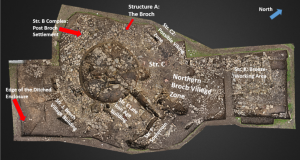
"Three and four"?
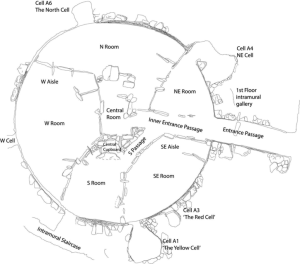 Side note: A 'void' found under the original floor of the Broch. "Wet and slippy. Rock cut. 'Is it a well?', asks Alice Roberts. "Waterlogged material found with brushwood mixed in with human hair {"cut from either end"} - from multiple individuals. - pinned down with wooden pegs. An unknown ritual practice." {Digging For Britain / S12 EP3}.
Side note: A 'void' found under the original floor of the Broch. "Wet and slippy. Rock cut. 'Is it a well?', asks Alice Roberts. "Waterlogged material found with brushwood mixed in with human hair {"cut from either end"} - from multiple individuals. - pinned down with wooden pegs. An unknown ritual practice." {Digging For Britain / S12 EP3}.
Hero or Heroine. Which and why?
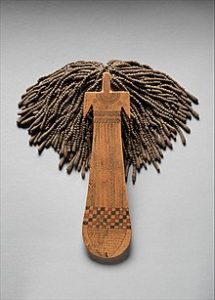
"Paddle dolls are made of thin pieces of wood which depict the torso of a woman with truncated arms and no legs. Thick "hair" is represented by small beads strung along string, which are often made from black mud." AND/OR: Adjacent to Monk’s Mound, Mound 72 reveals further insights into the Mississippian people’s spiritual and societal structures. Initially a ceremonial area marked by a “woodhenge,” this site evolved to include mortuary houses, platform mounds, and mass burials, culminating in the construction of a ridgetop mound. The mound is notably aligned with the summer solstice sunrise and winter solstice sunset, reflecting the Mississippian’s astronomical knowledge and its integration into their spiritual practices. The most striking discovery at Mound 72 is the “Birdman burial,” an elaborate interment of an elite individual, possibly an early Cahokian ruler. This burial, aligned with the summer solstice sunrise, featured the individual placed on a platform of over 20,000 marine-shell disc beads arranged in the shape of a falcon. Below this figure was a woman buried face down, with additional retainers and grave goods surrounding them, indicating a complex societal hierarchy and extensive trade networks.
Side note: One of the first ways we register transformation is by something we do to our hair, and hair has ever played a part in initiatory process and major transitions. Coming-of-age rites have required the containment of the flowing hair of youthfulness, its covering with turban or scarf, or its ordering into complex constructions and adornment that signifies entrance into full membership and adult responsibility within the tribe or culture. Gray hairs evoke, variously, maturity, authority, wisdom or waning. The short “bob” adopted by women at the turn of the nineteenth century and coinciding with radical feminist movements, the invention of the bicycle and sacrifice of the corset expressed greater freedom and self-determination. The long, braided hair of some Native American men is loosed at times of mourning, among Hindu men the hair is shaved, and the tearing, cutting or veiling of hair are ways we show grief or mark separation..." ['Book of Symbols' / Taschen].
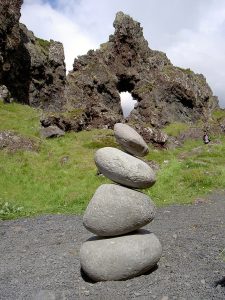
Ancient lifting stones. Mostly found N/W tip of Europe. Ie., Scotland, Ireland, Iceland. 'stack'? / 'Tower'?
Continued: "A rectangular "boxy" shape in the middle of the circular brock. Where normally the hearth is placed. Within it is a big slab {pointed/triangular top} with a hole in the middle, cut from either end in an "hour glass" shape. It is lined to the only entrance into the broch an eastern long passage {East, south-east} which is itself aligned to the autumn equinox rising sun. The ray of light from across the sea {'horizon'} shines through the hole on to a back stone {above the one directly in front of it {'pedestal'?}. At the height of the hole. Heel stone?} Its around this time that 70/80% of animals are sacrifed. {same}.
Plinth/Pavilion?
'Back to back'?
Light not fire.
Side note: The most famous legendary lifting stone in the world is the Húsafell Stone, named after the west country farming estate where it is located, about 132 km north east from Reykjavík. The iconic triangular-shaped stone which weighs 186 kg (410 lb) is said to have been crafted from a large rock, back in 1756, by a local pastor named Snorri Björnsson. Nicknamed the 'Kviahellan' (pen slab) by Snorri, he used it as the gate to his sheep and goat pen, ensuring the animals remain in the pen without escaping. The stone has since been used by strongmen as a test of strength.[7]
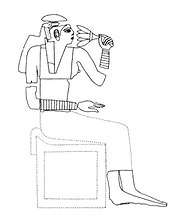
"To go in a striaght line is to follow ones nose."
According to Icelandic folklore, there are three levels to which your physical strength is measured by the stone. In ascending capacity they are amlóði, hálfsterkur and fullsterkur. Someone who could break the floor with the stone (lift the stone from the ground) which is already a substantial feat of strength, is called lazybones (amlóði in Icelandic), while anyone who could squat down, lap and lift it up to their waist level would be considered half-strong (hálfsterkur in Icelandic)..............
........................
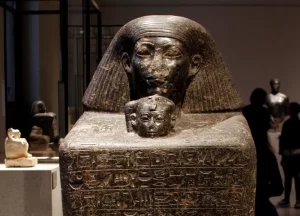
Kneeling, squatting or lifting?
However, for the iconic Icelandic full-strong status (fullsterkur in Icelandic), a person should lift it up to their chest, stand with it and walk it around the approximately 34 metre (112 ft) perimeter for a full 360° revolution around the sheep and goat pen.[8] This final level can only be achieved by someone with extreme physical strength, stamina and endurance as hoisting the massive stone on to the chest while standing compresses the thorax and decreases lung capacity significantly.
At the tip of the west coast, on Djúpalónssandur beach at the foot of Snæfellsjökull, at the western end of the Snæfellsnes peninsula, lies four legendary stones called Dritvík stones which dates back to the 14th century. Historically, the sailors who rowed out from this port were asked to lift each stone onto a natural plinth called Stallurinn, to prove their worth to be a ship's crew member and also to decide their ranks and share of the catch. The plinth had been around waist height, but throughout centuries more than half of it is now buried beneath the dark sand. Today, lifters prefer to lift the stones upto chest level and stand tall with them for a good lift.[9]
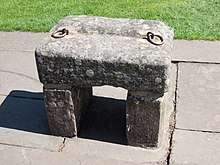
Stone of Scone.

Dinnie stone.
And/or: "Knee is the strongest joint in the body, the flexible hinge that allows us to sit on our heels as if on a pedestal or to squat into the form of a self-made chair from which to parley, or paint or toss chappatis. Sturdy knees bear the brunt of our infant crawling; scuffed knees are the medallions of childhood’s exuberance. At any age we revert to the stable crawling posture of hands and knees because of injury, stealth or confining spaces.
Even before we have exercised our own knees, we know the knees that comprise the hinge of a supporting lap.
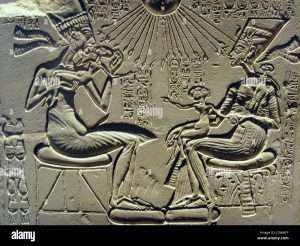
What are EACH sat on?
The unusual image of King Akhenaten and a young woman, perhaps his queen or daughter, illustrates how intimately one lap fits into another, a nesting enabled by the articulation of the knees. But the ancients also classed the fluid in the knee with cerebrospinal fluid, and considered it the sap of life, synonymous with offspring. Thus knees were seen as the seat of paternity and generation, vitality and strength (Onians, 174ff). The Latin genus, “birth,” is cognate with the English “knee” (ibid.). More than any other part of the body, we depend on the knees to raise or lower ourselves. Knees are the joints most at odds with gravity, and the focal point of leverage and balance, helping to support the body and its burdens.
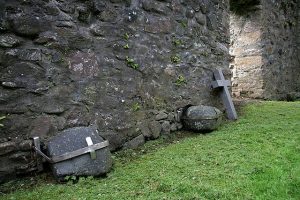
The blue or charter stones of Old Dailly. 'Sling'?
The knee’s connection with the life force is probably implicated in the symbolism of kneeling: We submit our own life force to something greater, or, as a suppliant, appeal to the life-soul of another whose knees we grasp (ibid., 180-1). One genuflects or “bends the knee” before the numinous or sacred or in obeisance to the powerful. Pilgrims crawl on their knees toward a holy shrine.

'Spirit' or 'Soul'?
The vanquished is reduced to his knees by the victor. We kneel to make declarations of love. Knees are also vulnerable. The kneecap or patella is a marvelous shield, but a sensitive one, and subject to a great deal of wear and tear. Knee injuries are extremely painful. Gangsters are known to break knees as a warning, perhaps “this time the life force, next time the life.” At the opposite pole, knees secure the triangular lotus position of Buddhism and Hinduism, emblematic of axial balance, stability and sustaining the closed circuit of the energy field through which the subtle body centers of the chakras are vitalized (Mookerjee, 19)." ['Book of Symbols' / Taschen].
Side note: The ruined church at Old Dailly dates back to pre-Reformation times and was built on the site of an earlier structure dedicated to St Michael. Two large smooth blue/grey boulders lie within the walls of the old roofless church and are thought to be Charter Stones dating back to ancient times when such stones were granted to communities in lieu of written charters and one reference refers to Dailly as a ‘Blue Stone Burgh’.
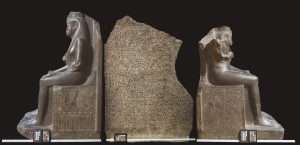
In general, memory involves the confluence of Chokhmah and Binah. Chokhmah is past and Binah is future. To bring something to the present in memory, they must be together. However, when each of them goes back to its own place, they are both in the aspect of “back to back.” This aspect results in forgetting (Etz Chaim, Shaar Shevirath HaKelim 2). {'The Lost Princess' / Rebbe Nachman}.
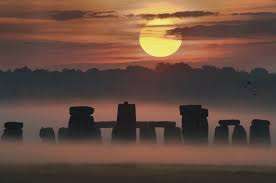
Blue stones left at at Waun Maun PRIOR to being moved east to their final resting place. External/internal. Remembering/forgetting. Which and why?
There are several traditions attached to the Old Dailly Blue Stones, one that in ancient times they were Sanctuary Stones and if wrongdoers, debtors in particular, placed their back against them they could not be apprehended....
Charter Stones are large stone monuments that date back to ancient times when such stones were granted to individuals or communities in lieu of written charters to signify the granting of land by the crown, feudal overlords or other individuals.[1] They were used to record ownership of land before written documents came into general use....
The stones were sometimes engraved or were instead distinctive in terms of colour, composition or shape. The use of these stones may relate to the common practice of using boundary stones to establish precise limits to areas of land ownership[3] but differ in that the proof of the land ownership was invested in them. Being stone they had a permanence that gave them an advantage over charters written on vellum, etc. An essential element was that the stone in question had once belonged to the donor and was next held by the grantee.[4] The size, weight and individuality of charter stones helped to ensure that they were not easily stolen or moved any significant distance.
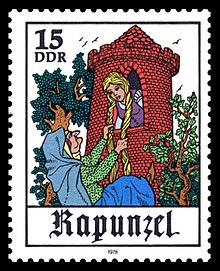
Elder/younger.

Which and why?
Continued: "Hair can be such a significant aspect of identity that to shave it voluntarily is often experienced as an event of great moment. The notion of inner change is crucial to the symbolic meaning of baldness. The symbolic strength of baldness is, perhaps, precisely because it exposes the surface of the head—the brainpan and vessel of understanding and potential change, the container of one’s intimate thoughts and imaginings. While baldness is associated symbolically with receptivity to the spiritual and with new life, it also evokes psychic as well as physical nakedness and acute vulnerability. The inevitability of change may require one to submit to a state of baldness or one may make a statement with baldness, where images of beginning and end, masculine and feminine, nature and spirit lose their sharp distinctions.
To have one’s head ritually shaved conveys the idea of consecration, initiation and spiritual transformation. The hero of the mythic night-sea journey loses all of his {her?} hair because of the terrific heat in the belly of the beast. Upon joining a religious order {or the military}, one gives a piece of ones individuality for the whole, a sacrifice by the shaving of ones hair....a psychic dying and rebirth....When St. Francis and his followers became clergy - they were tonsured {Latin. 'to shear'}, leaving only a ring of hair on their heads." {Page 350 'The Book of Symbols' / Taschen}.
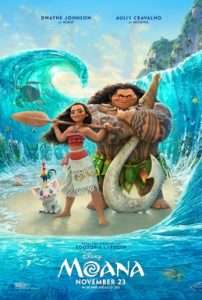
By hook or by crook? 'Paddle' to enlarge.
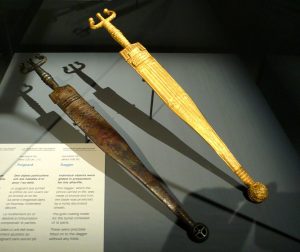
Possession of the Hochdorf 'Prince'. Styalized 'M' OR 'W'? ''Was also buried with his comb and razor, a pouch with three fish hooks, an iron knife and a quiver full of arrows.'' [Page 20 'The Celts: A Search for Civilization' / A. Roberts].
Side note: ''The word Minnesota comes from the Dakota[16] name for the Minnesota River, which got its name from one of two words in Dakota: "mní sóta", which means "clear blue water",[17][18] or "Mníssota", which means "cloudy water".[19][20] Dakota people demonstrated the name to early settlers by dropping milk into water and calling it mní sóta.[20] Many places in the state have similar Dakota names, such as Minnehaha Falls ("curling water" or waterfall), Minneiska ("white water"), Minneota ("much water"), Minnetonka ("big water"), Minnetrista ("crooked water"), and Minneapolis, a hybrid word combining Dakota mní ("water") and -polis (Greek for "city").''
Sioux to enlarge.
Continued: ''The name Achernar derives from the Arabic phrase meaning “the star at the end of the river.” This name was given to Achernar before Acamar was included in the constellation of Eridanus; the latter star is now considered “the end of the river.” In Greek mythology, Eridanus represented the river into which Cygnus dived ...
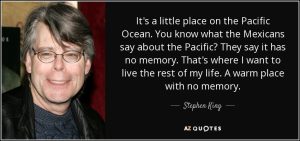
Something 'Set in Stone'?
Continued: ''The origin of the phrase is obscure, with multiple different explanations and no evidence to support any particular one over the others.[3] For example, a commonly repeated suggestion is that it comes from Hook Head in Wexford, Ireland and the nearby village of Crooke, in Waterford, Ireland. As such, the phrase would derive from a vow by Oliver Cromwell to take Waterford by Hook (on the Wexford side of Waterford Estuary) or by Crook (a village on the Waterford side); although the Wyclif tract was published at least 260 years before Cromwell. Another is that it comes from the customs regulating which firewood local people could take from common land; they were allowed to take any branches that they could reach with a billhook or a shepherd's crook (used to hook sheep).[4]
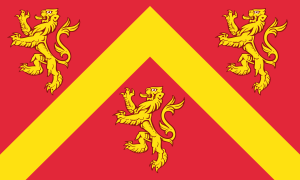
Chevron?
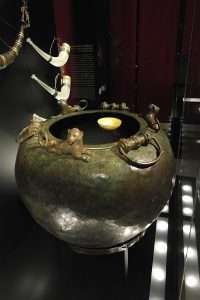
All bronze. Cauldron full of mead with three 'handles' and three reclining lions. From the Hochdorf Prince tomb. Sated? Joyous?
Side note: ''The English name of the island may be derived from the Old Norse; either Ǫngullsey "Hook Island"[8] or Ǫnglisey "Ǫngli's Island".[8][9] No record of such an Ǫngli survives,[10] but the place name was used by Viking raiders as early as the 10th century and later adopted by the Normans during their invasions of Gwynedd.[11] The traditional folk etymology reading the name as the "Island of the Angles (English)"[12][13] may account for its Norman use but has no merit,[9] as the Angles' name itself is probably cognate with the shape of the Angeln peninsula. All of them ultimately derive from the proposed Proto-Indo-European root *ank- ("to flex, bend, angle").[14] Throughout the 18th and 19th centuries and into the 20th, it was usually spelt Anglesea in documents,[15] a spelling that is still occasionally used today.
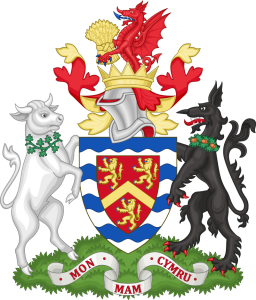
Mona?
Ynys Môn, the island's Welsh name, first appeared in the Latin Mona of various Roman sources.[16][17][18] It was likewise known to the Saxons as Monez.[19] The Brittonic original was in the past taken to have meant "Island of the Cow".[12][20] This view is untenable according to modern scientific philology and the etymology remains a mystery.
Poetic names for Anglesey include the Old Welsh Ynys Dywyll (Shady or Dark Isle) for its former groves and Ynys y Cedairn (Isle of the Brave) for its royal courts;[13] Gerald of Wales' Môn Mam Cymru ("Môn, Mother of Wales") for its agricultural productivity;[21] and Y fêl Ynys (Honey Isle).''
'Grove' to enlarge.
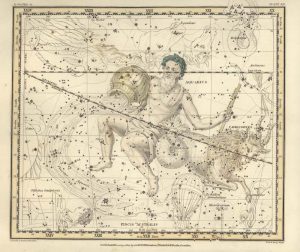
Try Fomalhaut.
"Working in the same circles as Bacon and Newton, Jan Baptiste Van Helmont wrote, 'There is a book inside us, written by the finger of 'god', through which we may read all things." Michael Maier also wrote...'' To drink the interior life in a long draft, is to see the higher life. He who discovers the interior, discovers what is in space.'' {'coal sacks'?} ....In all these sayings there is a clear implication that the key to scientific discovery somehow lies within." [Chapter 23, 'The Secret History of the World'].
'137' ?
''Transforming fingers'' in relation to: ''twice as high as broad'' ?
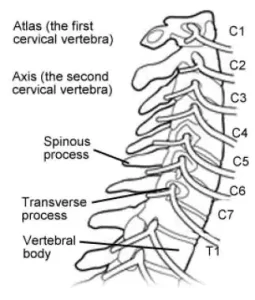
Atlas = ''the first cervical vertebrae.'' 'Gallery' to enlarge.
A working example {if only from a satirical viewpoint}: ''The cosmic web is the scaffolding of the universe - that spans the void. This web is made mainly of dark matter, a mysterious substance that dominates the universe, although we don't know what it is. One of the great mysteries in modern physics, probably some kind of particle that reacts very weakly with itself and light - which is why we cannot see it i.e., dark matter. But it does influence the universe with its gravity. It was in the dark heart of the cosmic web that gravity began to sculpt the early universe drawing together the two simpliest elements hydrogen and helium, the raw material for the very first stars....The universe was approaching a TURNING POINT because gravity was asserting its grip.....Out of the maelstrom the first gods emerged and there was light. The stars illuminate the universe, but that is the least interesting thing they do. The thing that makes the universe interesting and gives MEANING to it is life ...and life is just chemistry...The only thing that existed before the stars was hydrogen and helium....So without the stars the universe would be uninteresting and MEANINGLESS.'' ['Universe: The Sun: God Star' / B. Cox / BBC 2 / 27.10.21].
Fine Structure Constant to enlarge.
Side note: "At an altitude of 2500 miles you can stay up at only 2 miles per second and your orbit can be even freer....Getting completely out of the whirlpool is, relatively speaking, a pushover from here. The rule is that from any orbit that holds you continuously above the earth {or any other gravitating body} all you need do is multiply your velocity by √² to escape the body altogether. Thus if any satellite with an average velocity of 2 miles per second increases it to 2 √² or 2.8 mps it will just sail off never to return." [Page 64 'Serpent in the Sky' / John West].
'Plough' to enlarge.
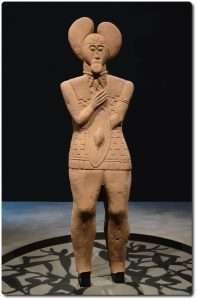
Happy or Sad?
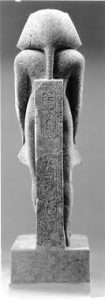
Spirit or Soul? First Witness?
A work in progress: {in the abstract sense of the word}: ''Now because {in the interim} the mirth had begun to fall to my consorts feet - and the virgins were not sorry to see it - they quickly started up a civil dance....After a few dances our president came in and told us how the artists and students had offered themselves to their Royal Majesties to act a merry comedy - to the House of the Sun....The principle virgin brought word to attend the Royal Procession in the gallery where we were led - yet as yet without any music....The unknown Duchess led the way between the young king and his bride. Behind these came 'six' aforementioned virgins in two ranks who carried the kings jewels belonging to the little altar {King John?}. Next came the three Kings. The Bridegroom was in the middle in a black plain satin dress, after the Italian fashion, wearing a small round black hat, with a little pointed black feather. After the kings came the three Queens the bride being the middle one....Old ATLAS brought up the rear....We eventually came to the House of the Sun - upon a richly furnished scaffold....A very ancient king came on, with some servants which brought before 'his' throne a little chest, with mention being made that it was found upon the water....'' [Pages 44/5 {Kindle} 'The Fourth Day: 'The Chemical Wedding of Christian Rosenkreutz'].
And/or: ''Another collection of bones, which archaeologists have suggested represents evidence of ritual - and, specifically, decapitation - consisted of a human skull with its mandible in place, together with the uppermost vertebrae of the spine: the atlas and the axis. They had belonged to someone who was around fifteen years old.'' [Page 153 'The Celts'].
'Young'?
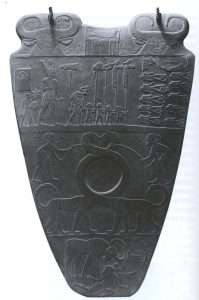
Narmer Palette.
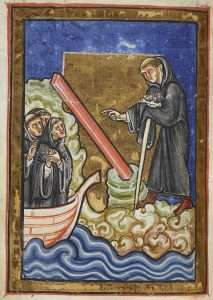
''Cuthbert discovers a piece of wood to be used as a roof beam.'' Cedar?
And/or: ''Archaeologists excavating at Gordion in Turkey claim to have found something that indicates a clear Celtic identity and heritage - human sacrifice and headhunting....Especially of the northern tribes {Strabo}: 'Of hanging the heads of their enemies from the necks of their horses - that were held in high esteem. They would embalm them in cedar oil.'' [Page 144 same book].
'Cheek to jowl'?
''The mandible is the largest bone in the human skull, forming the lower jawline and shaping the contour of the inferior third of the face.[1] Articulation with the skull base at the bilateral temporomandibular joints allows a range of movements facilitated by associated muscles, including dental occlusion with the ...
And/or: ''One skull from Gordion did show evidence of having been used as a symbolic object after death....Wood was discovered inside the large hole, foramen magnum, under the skull....It seems a human skull was mounted on a wooden stake.'' [Page 154 'The Celts' ].
''Head Jars'' to enlarge.
Cedar?
And/or: ''Some 8,000 years ago, the skull of a Scandinavian man in his 50s was impaled on a wooden stake in Sweden. Now, a new facial reconstruction by Swedish forensic artist Oscar Nilsson allows modern viewers to envision this mysterious individual’s prominent cheekbones, blue eyes and brown hair, reports Kristin Romey for National Geographic.
Archaeologists found the man’s cranium—as well as the skulls of eight other adults and one infant—in the boggy sediment of the Kanaljorden excavation site in Motala, Sweden, in 2012. The discovery marked the first archaeological evidence of Mesolithic hunter-gatherers mounting human skulls on stakes.''

''The inner core is believed to be composed of an iron–nickel alloy with some other elements. The temperature at the inner core's surface is estimated to be approximately 5,700 K (5,430 °C; 9,800 °F), which is about the temperature at the surface of the Sun.'' And/or: ''Scientists say they've detected a new, mysterious layer at the center of our home planet. The discovery could unearth more about Earth's history.'' ['Astronomy'].

Working example: An enactment at Thebes within the Sed Festival of Amenhotep showing - monkey, pintail duck and a leaping bull calf in relation to: 'A new royal body has to be roasted and created by the female {Hathor} if the king is to be reborn again...The coming of 'gold' that reinfuses him with life and vitality, initiating him to a new shining existence at dawn.'' [Pages 27/8 'Hathor Rising' / A. Roberts]. 'Labyrinth' to enlarge.
Iron-bearing groundwater typically emerges as a spring and the iron in it forms ferric hydroxide upon encountering the oxidizing environment of the surface....Europeans developed iron smelting from bog iron during the Pre-Roman Iron Age of the 5th/4th–1st centuries BCE, and most iron of the Viking era (late first millennium CE) came from bog iron.[3] Humans can process bog iron with limited technology, since it does not have to be molten to remove many impurities.[5] Due to its easy accessibility and reducibility, bog iron was commonly used for early iron production.[6] Early metallurgists identified bog-iron deposits by indicators such as withered grass, a wet environment, hygrophilous grass-dominated vegetation, and reddish-brown solutions or depositions in nearby waters.''
Question. Can the above tell us anything as to why there is a massive 'GAP' - in the archaeology sense of the word - between the Bronze and Iron Age?
'Aquae Sulis' to enlarge.
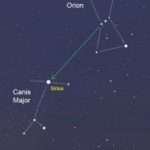
The 'Sun' behind the sun - in the 'spiritual' sense of the word.
![]() Continued: "Newton believed that god had set humankind a series of tests in the forms of messages encoded in ancient monuments like the Great pyramid {1224?}, in ancient texts like Genesis and in the very fabric of nature itself {sunflowers?}. Gods plan was that humanity would be intrigued by these mysteries and continue to develop the 'faculty of intelligence' until the time came when it would be able to crack these codes. Gottfried Wilhelm Leibniz, Newtons rival in the devising of calculus, made his advances while studying the Jewish numerical mysticism of the Kabbalah. Isaac Newton drew deeply on the philosophical approach of Jacob Boehme. Boehme's 'idealism' had led him to look for a unifying principle that held the universe together and put everything within it in place. For Boehme, it was a law of 'love' or 'desire' which he called the lubet. Newton carried the search for a universal principle over from 'idealism' into materialism and called it gravity." [Emphasis, this readers, chapter 38, 'The Sacred History]. Recall what 'idealism', in the main, is a representation of.
Continued: "Newton believed that god had set humankind a series of tests in the forms of messages encoded in ancient monuments like the Great pyramid {1224?}, in ancient texts like Genesis and in the very fabric of nature itself {sunflowers?}. Gods plan was that humanity would be intrigued by these mysteries and continue to develop the 'faculty of intelligence' until the time came when it would be able to crack these codes. Gottfried Wilhelm Leibniz, Newtons rival in the devising of calculus, made his advances while studying the Jewish numerical mysticism of the Kabbalah. Isaac Newton drew deeply on the philosophical approach of Jacob Boehme. Boehme's 'idealism' had led him to look for a unifying principle that held the universe together and put everything within it in place. For Boehme, it was a law of 'love' or 'desire' which he called the lubet. Newton carried the search for a universal principle over from 'idealism' into materialism and called it gravity." [Emphasis, this readers, chapter 38, 'The Sacred History]. Recall what 'idealism', in the main, is a representation of.
Mindset to enlarge.
'Three and four'.
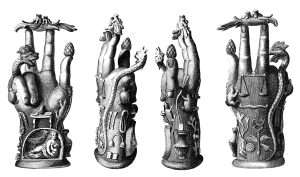
The hand of Sabazios. Thumb = pinecone?
''Calculus means 'small pebble' in Latin.'' ['Impossible' / S6 EP17].
'Little' to enlarge.
"Time is at the heart of all that is important to human beings." [Bernard D'Espagnat. From within the book by P. Davies]. Try ''time'' And/or ''hindsight'' in relation to ''foresight'' - if only in understanding subject material. Benefits of. In the long term. Not just in {A}.
Ishon?

Spathulate Fleawort. Flowers EVERY OTHER YEAR at the BEGINNING of summer. At least SIX BLOOMS or more. Found no where else IN THE WORLD except the South stack on Holyhead Island off Anglesey. Wales. ''NO ONE knows why''. Does Asteria? AND/OR: Did the Druids? See below.
Side step: ''A mathematical hidden pattern in nature...Some petals on a flower have 3, some five, some eight, some thirteen - but rarely any numbers inbetween. These numbers crop up time and time again called the Fibonacci sequence. If you look at the head of a sunflower you see the seeds arranged in a spiraling pattern. Count the number of spirals in one direction and a Fibonacci number occurs. Count the spirals in the opposite direction and an adjacent Fibonacci number is found. The plant does this so as not to damage the seeds. It spaces them out.'' ['Magic Numbers' by Hannah Fry].
''Many groups associate sunflowers with prolonged constancy and loyalty, reflecting the flower bud's tendency to follow the sun across the sky. Greek mythology celebrates a sunflower's apparent dedication to the sun in the tale of a water nymph who fell in love with the god of the sun, Apollo.''
And/or: ''Now to Abraham and his Seed were the promises made. He does not say, "And to seeds," as of many, but as of one, "And to your Seed,"who is Christ.''
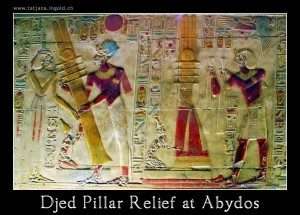
''Raising''?
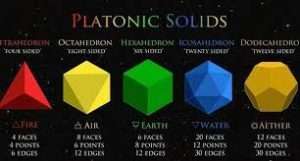
'The Five Elements': ''According to Plato can be found in something like a mathematical heaven, where all numbers can be found - BUT ONLY if you are a true believer.'' 'SEE' IT? ['Magic Numbers' / Hannah Fry].
Cronus who also 'swallowed' something.
From a different perspective {with something extra}: ''Everything is swallowing everything else, all the time. It is a law of the space/time vortex {'void' and/or spiral?} and is resurrected into the next higher level octave. There is a similarity in appearance each and every time. An example in Nature would be a tree going through the seasons...'' [Page 92 'Shamanic Mysteries of Egypt' ].
Try Sycamore Tree.

Tut's nurse. Real or symbolic?
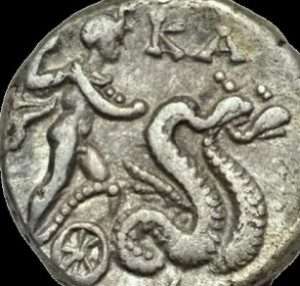
Wearing the elephant scalp.
From a different perspective: ''He saw in a vision the Ultimate Cause of the universe as a huge luminous triangle giving birth every moment to an infinite number of worlds {Brane Theory?}....He had a vision of the divine Maya, the inscrutable power of god, by which the universe is created and sustained, and into which it is finally absorbed {'autopilot' to enlarge}. In this 'vision' he saw a woman of beauty, about to become a 'mother', emerging from the Ganges and slowly approaching the Panchavati. Presently she gave 'birth' to a child and began to nurse it tenderly. A moment later she assumed a terrible aspect, seized the child with her grim jaws, and crushed it. Swallowing it, she re-entered the Ganges. But the most remarkable experience during this period was the awakening of the Kundalini Sakti, the Serpent Power. He actually saw the 'Power' at first lying asleep at the bottom of the spinal column, then waking up and ascending along the mystic Sushumna CANAL and through its six centers, or lotuses, to the Sahasrara, the thousand petalled lotus in the top of the head.'' [Page 22 'The Gospel of Sri Ramakrishna'].
'Atlas' to enlarge
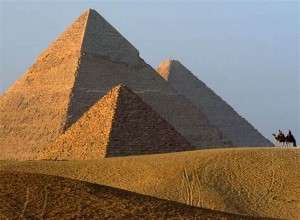
Two steps forward only one back? Question. Where in the night sky does the figure of Orion make that about turn? {u-turn}.
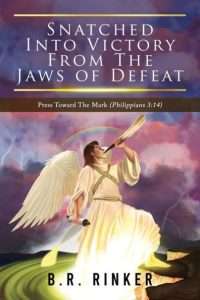
"Then, when our dying bodies have been transformed into bodies that will never die, this Scripture will be fulfilled: Death is swallowed up in victory. O death, where is your victory? O death, where is your sting?”
For sin is the sting that results in death, and the law gives sin its power. But thank God! He gives us victory over sin and death through our Lord Jesus Christ." [ 1 Corinthians 15: 50-57].
Side note. ''One step forward and two back'' - Giza complex link? If so, how {who?} would that 'Saturnian' principle be represented?
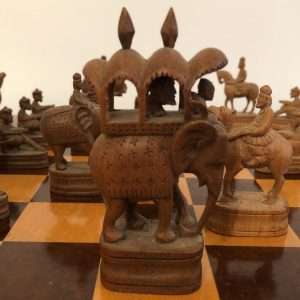
"Antique Indian elephant chess piece representing the king." Bishop + Howdah to enlarge.
"Snatch victory (from the jaws of defeat): to win at the last moment possible, when it had previously seemed certain that you were going to lose: He came on as a substitute and snatched victory with a late goal. The story of this business is one of victory snatched from the jaws of defeat."
Gog/ Magog.
"He will swallow up death in victory. He will wipe away the tears from all faces." {Isaiah 25:8}.
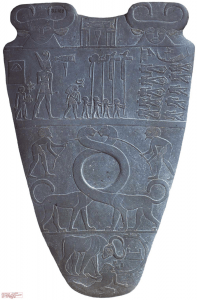
Hard or easy to 'swallow' ? Untied or a coming together?
Continued: "Lets consider the symbolism. Nine months, or 'forty' weeks {'wilderness'?}, is the human gestation period. So here we go. Something is nearly born. Forward nearly nine, but not quite and then we grind to a halt. We have to turn back. We must retract, reflect, turn within, review, adapt, go inside and prepare for future forward motion. So something is nearly born but in a sense has to 'die', has to be reabsorbed to gain more substance {'Crocodile/Hippo'?}. This is the process of Saturn, and Saturn in the chart will show where 'this happens', in relation to what areas of life experience {the house} and it what manner {the sign}. It is where 'struggle' is involved...within the process of time, and the laws of manifestation...It is also an issue central to the sign of Aquarius, which Saturn ruled before Uranus was discovered: the time lag between generating a revolutionary idea {Imhotep?} and its manifestation in form." ['Saturn, Chiron and the Centaurs'].
Remember we are attempting to define a ''mind set''.
'One hundred and fortyfour'? {144].
Side note: All Mastaba's prior to Step Pyramid. With the exception of the Son of Menkaure - who reverted back to type {i.e., a single mastaba}.
Seven into eight?

Understanding the above gets us closer to ''grasping'' such paragraphs as: "In the Tarot, Saturn is the 'twentyone' {21st} key, the World, symbol of the cosmic consciousness. As in mythology the god Saturn was said to 'eat' his children, so in esoteric psychology we do find that the cosmic consciousness, when it becomes a personal experience, swallows up all its differentiations. And as Saturn was the 'father' of the gods, so is the cosmic consciousness really the source of all other modes of consciousness....Therefore in the books of wisdom the methods that lead to it are sometimes described as the Path of Return." [Page 159 of the book by P. F. Case. Vol 1].
REFRESHER: "Who am I? Where am I going? What is it all for? If these questions have been running through your head {'back of'?} lately, you have begun the ultimate quest, which in one form, is to answer questions such as these, and in another is perhaps the attainment of the Holy Grail." ['Magic for the Aquarian Age' / Marian Green].
REFRESHER: ''In the search {quest} for the 'grail' - one has to ask the right question.''
A working example. ONE example: ''Can one stop being a machine?'' i asked. ''Ah! that is the question,'' said G. If you had asked such questions more often we might, perhaps, have got somewhere in our talks.'' [Chapter 1 'In Search of the Miraculous' / P.D. Ouspensky].
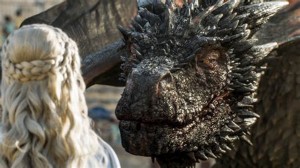
"I have come to believe, through many years of studying this script, that the original title of the manuscript was probably THE BODY OF THE DRAGON, a book in 'three' sectional parts bound together." Douglas Monroe.
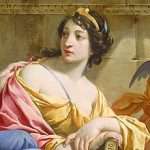
{C}alliope - Chief muse.
And/or: "Caroline, you may not be aware of this, but your name begins with the letter associated with the balance of the number three. Balance is a grace of spirit. This is why the horizon stone played such an important part in the Egyptian mysteries. The hieroglyph depicts the meeting of Sun and Earth...This symbol is the only hieroglyphic on the outer wall of the Great Pyramid...The name given to the pyramid was 'Akhet Khufu', which meant ''horizon of Khufu'' - this later term was misunderstood by later Egyptologists, who turned it into the name Cheops. This pregnant symbol is {also?} located above the passageway which pierces into the rock foundations of the vast structure. As a symbol, it survived into modern times - as the symbol for Libra, the cosmic balance, which now consists of three elements...When he had drawn the sigil, he ran the back of his pencil {'lead' link} through the curvature {'arc' / Uas link?} of space between the solar disc and the horizon of earth...'The invisible {unknown quantity?} space is just as important as the Sun and Earth. Do you see how even the most simple-seeming of the arcane symbols are steeped in hermetic antiquity?' ['The Zelator'. Italics/parenthesis, this readers].
Question. If Khufu = Libra. What do the other 'two' represent?
'Elephant in the Dark' by ?
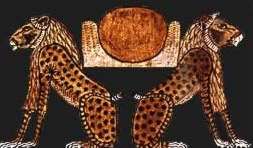 "At first, in Leo, the individual goes forth in dramatic excitement, asserting himself with grand gestures, gambling with life and love, creating works of art in his own image by sheer projection of himself. As he finds resistance, as he is hurt by the reactions of others, as he fails in one way or another, he is forced to submit to Virgo's discipline, to study, to become an apprentice." [Page 132, 'The Zodiac as the Universal Matrix'].
"At first, in Leo, the individual goes forth in dramatic excitement, asserting himself with grand gestures, gambling with life and love, creating works of art in his own image by sheer projection of himself. As he finds resistance, as he is hurt by the reactions of others, as he fails in one way or another, he is forced to submit to Virgo's discipline, to study, to become an apprentice." [Page 132, 'The Zodiac as the Universal Matrix'].
As {one?} example: "Pluto was in Virgo when modern Freemasonry {1717} and the age of philosophical rationalism began, clearing the way to the revolutionary era..." [Page 116, same book].
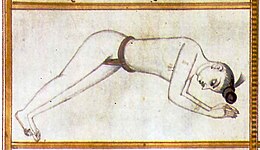
The name comes from the pose's similarity to the way a dog stretches when getting up. The Sanskrit name is from adhas (अधस्) meaning "down", mukha (मुख) meaning "face", śvāna (श्वान) meaning "dog",[4] and āsana (आसन) meaning "posture" or "seat".[9]
The name is not found in the medieval hatha yoga texts, but a similar posture, Gajāsana (Elephant Pose), was described in the 18th century Haṭhābhyāsapaddhati; the text calls for it to be repeated "over and over again" from a prone position.

In cosmology, the cosmological constant (usually denoted by the Greek capital letter lambda: Λ), alternatively called Einstein's cosmological constant, is a coefficient that Albert Einstein initially added to his field equations of general relativity. He later removed it; however, much later it was revived to express the energy density of space, or vacuum energy, that arises in quantum mechanics. It is closely associated with the concept of dark energy. Einstein introduced the constant in 1917[2] to counterbalance the effect of gravity and achieve a static universe, which was then assumed. Einstein's cosmological constant was abandoned after Edwin Hubble confirmed that the universe was expanding.[3] From the 1930s until the late 1990s, most physicists agreed with Einstein's choice of setting the cosmological constant to zero.[4] That changed with the discovery in 1998 that the expansion of the universe is accelerating, implying that the cosmological constant may have a positive value.[5]
One encompasses the other? Attract / repel? And/or convex/concave?
Side note: De Plancy published dozens of titles in his lifetime, but he never surpassed the success (or infamy) of the Dictionnaire Infernal, which first appeared in 1818 and was followed by several updated editions. The full subhead for the 1926 edition describes the book as a “universal library on the beings, characters, books, deeds, and causes which pertain to the manifestations and magic of trafficking with Hell; divinations, occult sciences, grimoires, marvels, errors, prejudices, traditions, folktales, the various superstitions, and generally all manner of marvelous, surprising, mysterious, and supernatural beliefs.”

Positive or negative?
When de Plancy first published his guide to the world of demons in 1818, he had a reputation as an opponent of superstition and religion. However, in 1841, de Plancy had a change of heart, and converted into a devout Catholic. By the sixth edition of the Dictionnaire Infernal, published in 1863, whether influenced by his conversion or simply thanks to extra resources, de Plancy included illustrations. And it’s a good thing he did, as the bizarre images that accompanied the text are some of the most indelible depictions of demons ever created.
The 1863 edition of the book featured hundreds of spot illustrations, over 60 of which were of specific demons. They were designed by the......

French painter Louis Le Breton, and then engraved as woodcuts by M. Jarrault, both of whom signed many of the illustrations. Their odd depictions of stilt-legged owl men, insect-legged frog-cat kings, and spiral-horned jesters transformed the Dictionnaire Infernal from an occult oddity that could easily have been forgotten to a frightening bestiary that is still referenced and shared today.
Continued: "From another regard, the 'lead' of Saturn is the downward and inward pull of gravity into subjectivity."

Convex / concave or both?
"Saturn is also named the Lord of Decrease...his power manifests in the later stages of decay. He rules over the spoiled, the filth and the refuse of society..." ['Saturn and the Theoretical Foundations of an Emerging Discipline'].
Try ''Saturn'' to 'see' something {beginning/end?} from an astrology point of view. - represented within those universal {'planetary'?} constants.
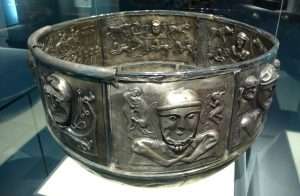
Cauldron.
And/or: "A planet is an astronomical body orbiting a star or stellar remnant that is massive enough to be rounded by its own gravity, but is not massive enough to cause thermonuclear fusion..." ['Wiki']. All used as a means...? i.e.,''rounded'' in relation to ''Being'' and/or ''becoming''. Enlarged throughout.
Question. If a true appraisal, how could that knowledge have been known?
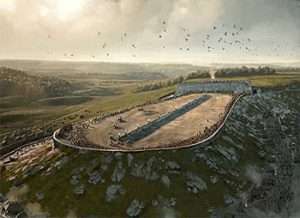
Alte Burg. Described as an oval shape 'hippodrome'. The first of its kind. Cursus at stonehenge to enlarge.
A working example: ''Bowness' means 'rounded', or bow-shaped headland', from either the Old English 'boga', 'bow', and 'næss', or, more probably, the Old Norse 'bogi' and 'nes''.
Burgh - on Sands to enlarge.
''It was the round table that first appearded in Wace Roman de Brut's Arthurian legend.''
Continued: "That year [1934], in a lecture he gave in Zurich, he underlined the importance of eliminating the infinities that persisted in quantum electrodynamics and drew attention to the theories relationship to our understanding of space and time. The solution to this problem, would require "an interpretation of the numerical value of the dimensionless number [137]."
Analogy: "It was within the awareness of the vision that there was no space or time within the cube itself." Find it to understand it - before asking Yes or No?
'Researches on Magnetism, Electricity, Heat, Light, Crystallization and Chemical Attraction in Relation to the Vital Force' by Baron Karl Von Reichenbach.
Think on it, relative to A/B/C. Explained throughout.
'The Universe a Vast Electric Organism' by George Woodard Warder.
"A future theory, must bring about a deep unification of foundations." [Both quotes by W. Pauli]. Try ''twelve'' and/or its permutations.

'Glass' of wine or water?
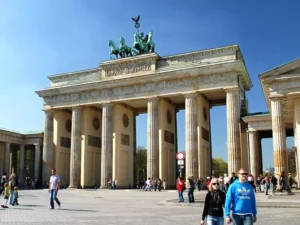 Side note: "The Brandenburg Gate is located in the western part of the city centre within Mitte, at the junction of Unter den Linden and Ebertstraße. The gate dominates the Pariser Platz to the east, while to the immediate west it opens onto the Platz des 18. März beyond which the Straße des 17. Juni begins. One block to the north stands the Reichstag building, home to the German parliament (Bundestag), and further to the west is the Tiergarten inner-city park. The gate also forms the monumental entry to Unter den Linden, which leads directly to the former City Palace of the Prussian monarchs (now housing the Humboldt Forum museum), and the Berlin Cathedral.
Side note: "The Brandenburg Gate is located in the western part of the city centre within Mitte, at the junction of Unter den Linden and Ebertstraße. The gate dominates the Pariser Platz to the east, while to the immediate west it opens onto the Platz des 18. März beyond which the Straße des 17. Juni begins. One block to the north stands the Reichstag building, home to the German parliament (Bundestag), and further to the west is the Tiergarten inner-city park. The gate also forms the monumental entry to Unter den Linden, which leads directly to the former City Palace of the Prussian monarchs (now housing the Humboldt Forum museum), and the Berlin Cathedral.
 Throughout its existence, the Brandenburg Gate was often a site for major historical events. After World War II and during the Cold War, until its fall in 1989, the gateway was obstructed by the Berlin Wall, and was for almost three decades a marker of the city's division. Since German reunification in 1990, it has been considered not only a symbol of the tumultuous histories of Germany and Europe, but also of European unity and peace.[1]
Throughout its existence, the Brandenburg Gate was often a site for major historical events. After World War II and during the Cold War, until its fall in 1989, the gateway was obstructed by the Berlin Wall, and was for almost three decades a marker of the city's division. Since German reunification in 1990, it has been considered not only a symbol of the tumultuous histories of Germany and Europe, but also of European unity and peace.[1]
The central portion of the gate draws from the tradition of the Roman triumphal arch, although in style it is one of the first examples of Greek Revival architecture in Germany.[2] The gate is supported by twelve fluted Doric columns, six to each side, forming five passageways. There are also walls between the pairs of columns at front and back, decorated with classicizing reliefs of the Labours of Hercules. Citizens were originally allowed to use only the outermost two passageways on each side. Its design is based on the Propylaea, the gateway to the Acropolis of Athens,[2] which also had a front with six Doric columns, though these were topped by a triangular pediment.
The Reichstag dome is a glass dome constructed on top of the rebuilt Reichstag building in Berlin, Germany. It was designed by architect Norman Foster, from an idea of Gottfried Böhm, and built by Waagner-Biro to symbolize the reunification of Germany. The distinctive appearance of the dome has made it a prominent landmark in the city.
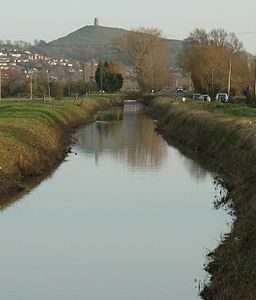
Isle of 'glass'.
And/or: A glass ceiling is a metaphor usually applied to people of marginalized genders, used to represent an invisible barrier that prevents an oppressed demographic from rising beyond a certain level in a hierarchy.[1] The metaphor was first used by feminists in reference to barriers in the careers of high-achieving women.[2][3] It was coined by Marilyn Loden during a speech in 1978.[4][5][6][7]
In the United States, the concept is sometimes extended to refer to racial inequality.[2][8] Minority women in white-majority countries often find the most difficulty in "breaking the glass ceiling" because they lie at the intersection of two historically marginalized groups: women and people of color.[9]  East Asian and East Asian American news outlets have coined the term "bamboo ceiling" to refer to the obstacles that all East Asian Americans face in advancing their careers.[10][11] Similarly, a multitude of barriers that refugees and asylum seekers face in their search for meaningful employment is referred to as the "canvas ceiling".
East Asian and East Asian American news outlets have coined the term "bamboo ceiling" to refer to the obstacles that all East Asian Americans face in advancing their careers.[10][11] Similarly, a multitude of barriers that refugees and asylum seekers face in their search for meaningful employment is referred to as the "canvas ceiling".
Linen?
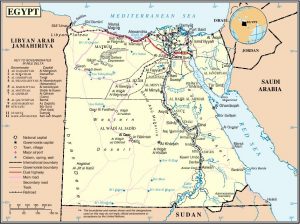
'Left' angled triangle? Why?
Continued: "In recent years Roger Penrose has made a pioneering attempt to combine neurophysiology with physics. He suggested that structures within neurons - microtubules - could be the seat of the quantum computations that are the dynamics behind thinking. But these are not simply logical computations, because quantum physics, which includes the uncertainty principle, and the concept of ambiguity, introduces an indefinable extra ingredient - intuition. This element is not addressed in any of the research programs mentioned here, and is a critical shortcoming. Pauli and Jung emphasized its importance, as did Einstein and other scientists when they recalled how they had made their discoveries. The puzzle of how we reason, how we think - of how we create knowledge from already existing knowledge and how we draw conclusions that go beyond the premises [or 'boundaries'?] , cannot be solved by logic alone." [Same book].
This subject does include that one missing ''element.'' From 'its' beginning to the present date. Found within. [Try ''intuitive'' as well as ''intuition''].

"A beehive tomb, also known as a tholos tomb (plural tholoi) (Greek: θολωτός τάφος, θολωτοί τάφοι, "domed tombs"), is a burial structure characterized by its false dome created by the superposition of successively smaller rings of mudbricks or, more often, stones. The resulting structure resembles a beehive, hence the traditional English name. ..In Greece, the vaulted tholoi are a monumental Late Bronze Age development. Their origin is a matter of considerable debate:.."
Question. If that assessment turns out to be a valid one. What does that imply?
 "We are stuck with our own intuitive stranger...By accepting our inner stranger, we may come to a better understanding of our own minds." [From the program 'Horizon' {BBC2?} 'How You Really Make Decisions' by Daniel Kahneman].
"We are stuck with our own intuitive stranger...By accepting our inner stranger, we may come to a better understanding of our own minds." [From the program 'Horizon' {BBC2?} 'How You Really Make Decisions' by Daniel Kahneman].
Refresher: "The Siren heralds a friend, the Bee a stranger."
Cancer.
"Not out but through."
"For a long time i confused intuitive consciousness with cerebral consciousness, but the later is, only a record of our mental operations...Consciousness is a state of identification. To become conscious of anything is to recognize in oneself this identity: it is to experience. The artisan who identifies with the material with which he is working experiences its nature and reaction in himself. He becomes conscious of it...The awakening of the instinctive consciousness takes place. In a more subtle way, this will be the awakening of our intuitive faculties {cognitive?}, whose exercise creates in us the intuitive state..." ['Journey into Light'].
''Intuitive consciousness'' in relation to eureka moments? But now in the 'spiritual' sense of the 'word'. Get it?

The foundations of something {''Under ones belt'' }. A representation of 'lower' or 'higher'?
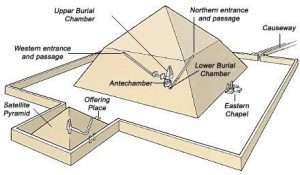
'Three and Four'?
REFRESHER: As seen from a different perspective {that first one?}: "When the zodiac is considered as a process of cyclic development, the signs of the zodiac can be shown to have a certain definite meaning...The number twelve is significant in ancient and modern numerology, as being the product of 4 and 3 {enlarged elsewhere}...The division of the signs into 'four elements' {fire, earth, air, water} - or into three types {cardinal, fixed, mutable} - is not a division produced by a sequence in time, but by a kind of segmentation of the whole into the parts - as when a fertilized egg divides into cells, which in turn divide into a group of cells, forming the basic tissues, then organs, of the embryo. The basic division is into four ''elements''. The concept of ''elements'' and in medieval times ''humors'', or in the modern times of ''psychological functions and types'' in Jung's psychology, or that of the 4 ''dimensions'' of space-time, is the result of a very basic intuition of the nature of reality {but only when that ''bit'' is taken into account?} - We define reality as the ''sum result of human experience'', and every experience has form {Plato's forms?]; that is to say, it is at once located in a ''frame of reference'', which is constituted by the three dimensions of space, and by time. Today we speak of ''space-time'' as a four dimensional structure of experience. Every experience implies a more or less immediate sensing of the way in which the cause of the experience fits into our space-time human world. The four dimensions of space-time are therefore the four ''elements'' of experience." [Page 12 'The Zodiac as the Universal Matrix' / Dane Rudhyar. Underlined aspect - this readers input].
N.B. 'Division' and 'multiply' examples see index King James Study Bible.
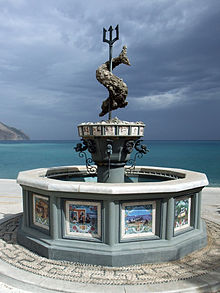
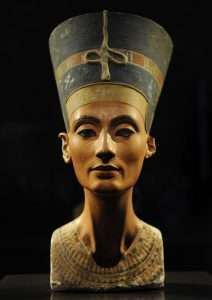
Idol?
"When they become self-aware like 'Adam', [key] they may reveal news of the 'Knower' and that which He knows. One of them dove down into the ocean of Oneness and said, 'I am the truth'. Another rode in a boat on the same ocean, and told of how near or far he was from shore. One looks on the outside and talks of dry land, while gathering shells, and the other plunges into the ocean and gets the pearl. One starts talking about the bits and parts of things, how they appear and function. Another begins telling of the Eternal one and then of creatures who live and die. One speaks of long curls of hair, the 'beauty' spot, the curves of her eyebrows, the 'beloved' man in dim candle light, [key] passing a goblet of wine. The other speaks only of himself and his opinions. And the other loses himself in idol's love, identifying himself with the monks rope around his waist. Each one speaks the language native to the 'level' he has reached, and it is hard to understand what he says.... You the seeker of understanding, you must strive [key] to learn the meaning of what they say." [Extract taken from a poem by the Persian Sufi known as Mahmud Shabistari. From the book, 'The Tree of Being' by Ibn Arabi].
'Mans Search for Meaning' / Viktor Frankl.
"Those of a philosophical turn of thought may reflect that the candle is an image of humanity. The wax corresponds to the body, the wick to the mind, and the flame to the spirit." [Extract from the book 'ABC of Witchcraft: Past and Present' by D. Valiente].
"Our attitude should be that of reasonable enquiry and our interest that of the investigating philosopher, willing to accept an hypothesis on the basis of its possibility, but being unwilling to acknowledge as proven truth anything until we know it for and in ourselves. I, an aspirant to the higher mysteries, and one who has searched into them for a longer period than has been possible as yet to many, may write of things as yet impossible of demonstration, to you or the public, who may read these instructions. To me they may be and are truth and proven fact and for me that may suffice. For you they should be regarded as significant possibilities and hints to the direction in which truth may be sought, but beyond that you should not permit yourself to go." [Introduction to the book by Alice Bailey].
Link to 'objectivity'. Purpose and benefit of. As it is in any subject. Any subject that is; that is worth its 'salt'. Try that one.

Big cup little dick? or the largest one on the planet? Would Mother Russia celebrate or castrate?

SPOT the difference.
Something to ponder on: "When we think about the future, we envision a version of the present: that the TV shows, movies, and singers who matter most today will be the ones remembered in 100 years. History, says otherwise, Chuck Klosterman argues in 'But what if we're wrong? Thinking about the present as if it were the past'. The works that endure, he says, are the ones that future societies find meaningful, whether they're valued in their day or not. Herman Melville's 'Moby Dick' was scorned when it came out, and Franz Kafka was dead before 'The Trial' saw print. So which of today's writers will be remembered. Probably not Philip Roth or Jonathan Franzen, Klosterman says, but someone writing in obscurity {perhaps on the deep web}, representing an ultra-marginalised group and covering subjects that can be completely reinterpreted by future readers..." [From the 'Time Magazine' {June 2016} entitled 'Predicting the next great American novel'].
Try ''Bedtime Story'' - within this web pages 'search box'. Question. Agree or disagree?
P.S. Good luck on your own personal journey...Should any of the above be true. To whomever that reader might be.


